Lisbon – Portugal
On a sunny spring day early in May, we arrived in Lisbon and checked into the charming Hotel Madalena Beautique Hotel on Rua da Madalena, within walking distance of the Alfama, Baixa, Chiado, and Bairro Alto neighborhoods.
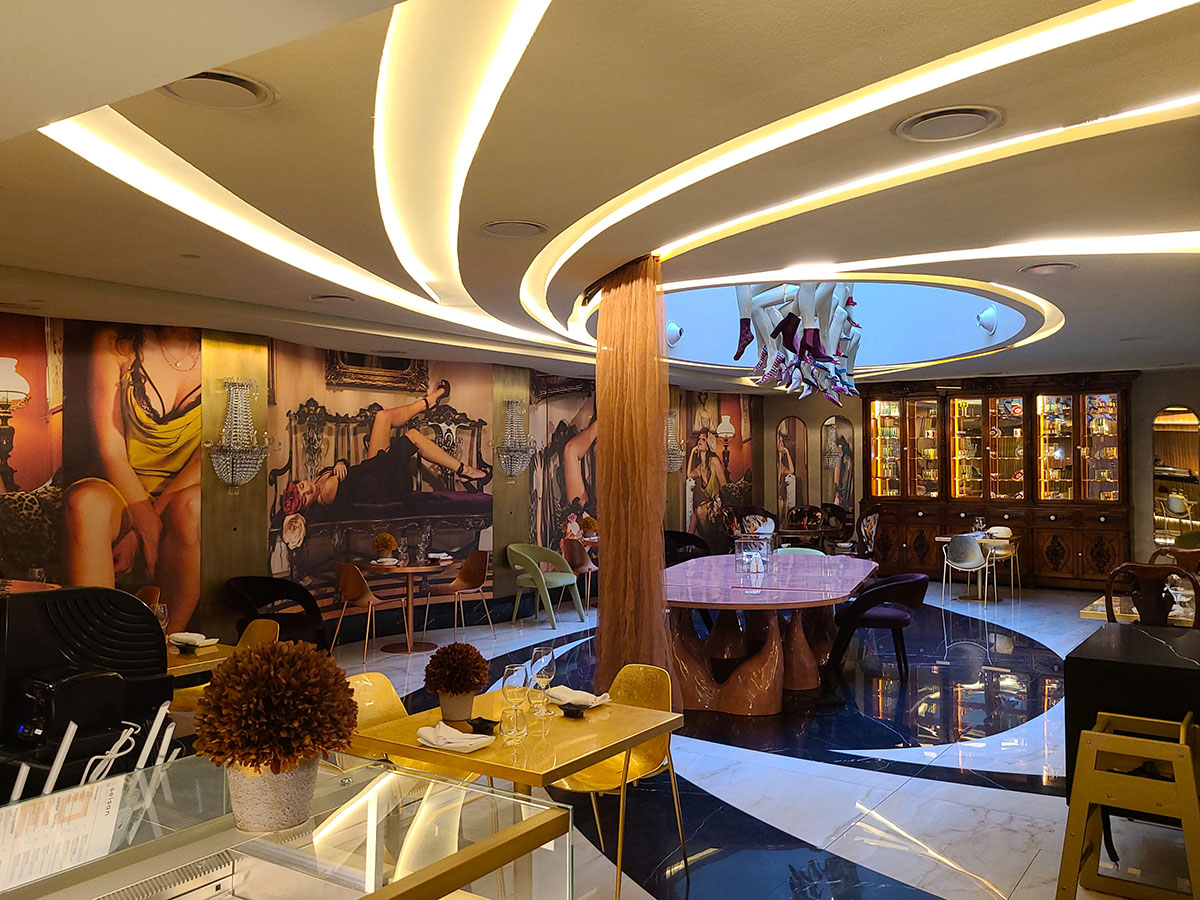 The Art Deco dining area, at Hotel Madalena
The Art Deco dining area, at Hotel MadalenaWe began our visit to Portugal’s coastal capital at a viewpoint accessible via a little side street where an elevator whizzes up to the Zanzibar Restaurant, and a sensational view of the city. Red roofed buildings – painted in a palette of muted colors – cascade downhill to the port where cruise ships dock, and the ocean glistens in the sunlight.
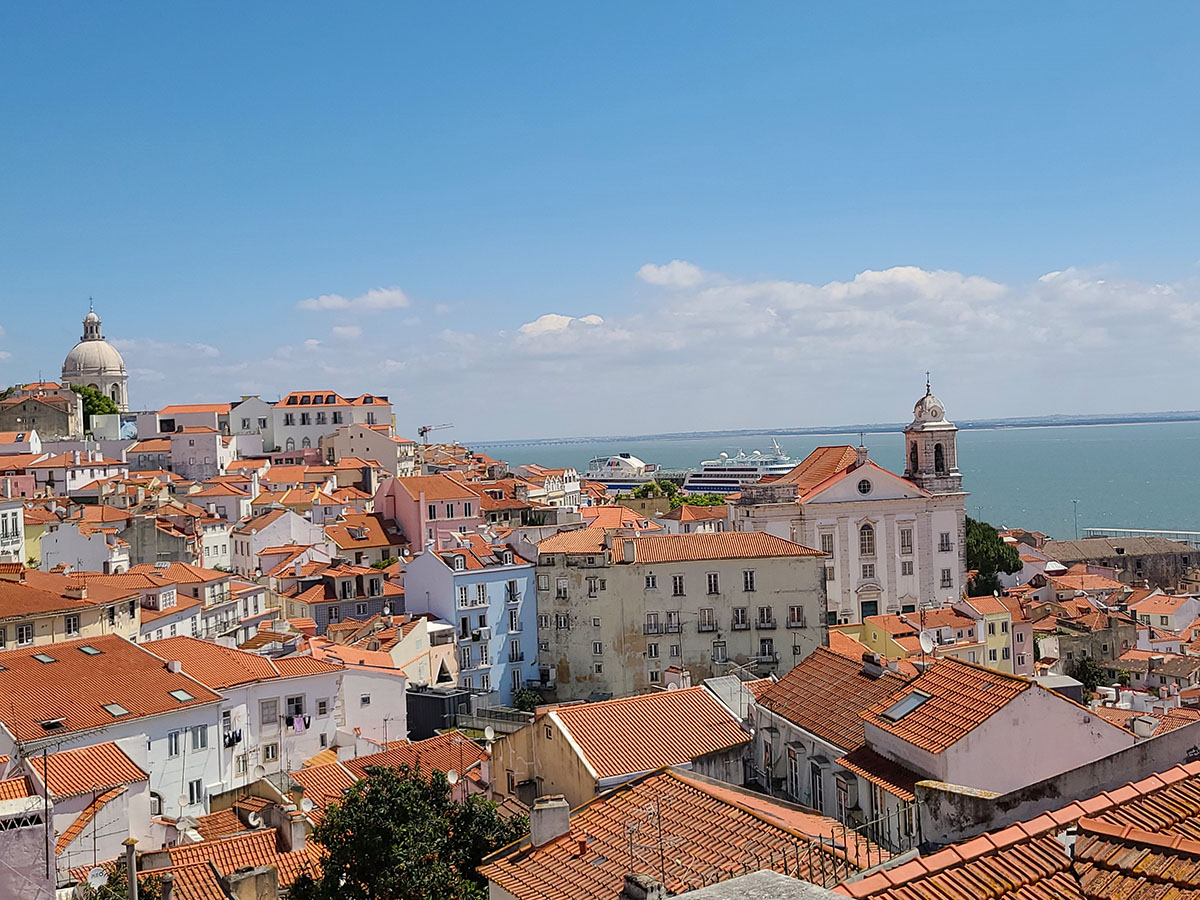
From there, it’s a steep walk uphill along winding, narrow, cobblestone streets lined with vintage buildings, their facades blanketed in the famous Portuguese ceramic tiles. Bakeries display freshly baked crispy, flaky pastries, and mini-custard tarts – Pastéis de Nata – which are addictive! Taste your first freshly baked Pastéis de Nata, and you will be hooked!
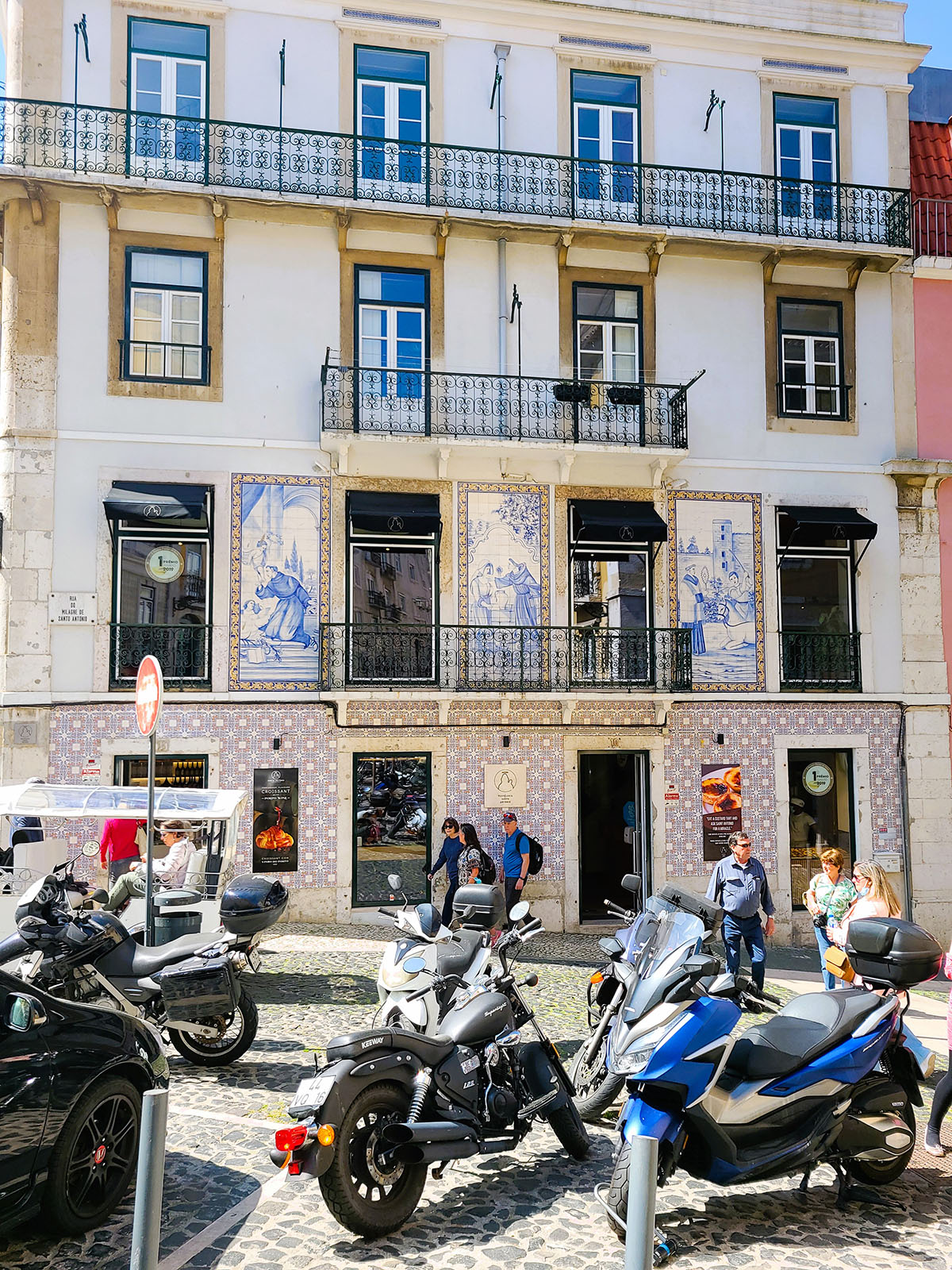
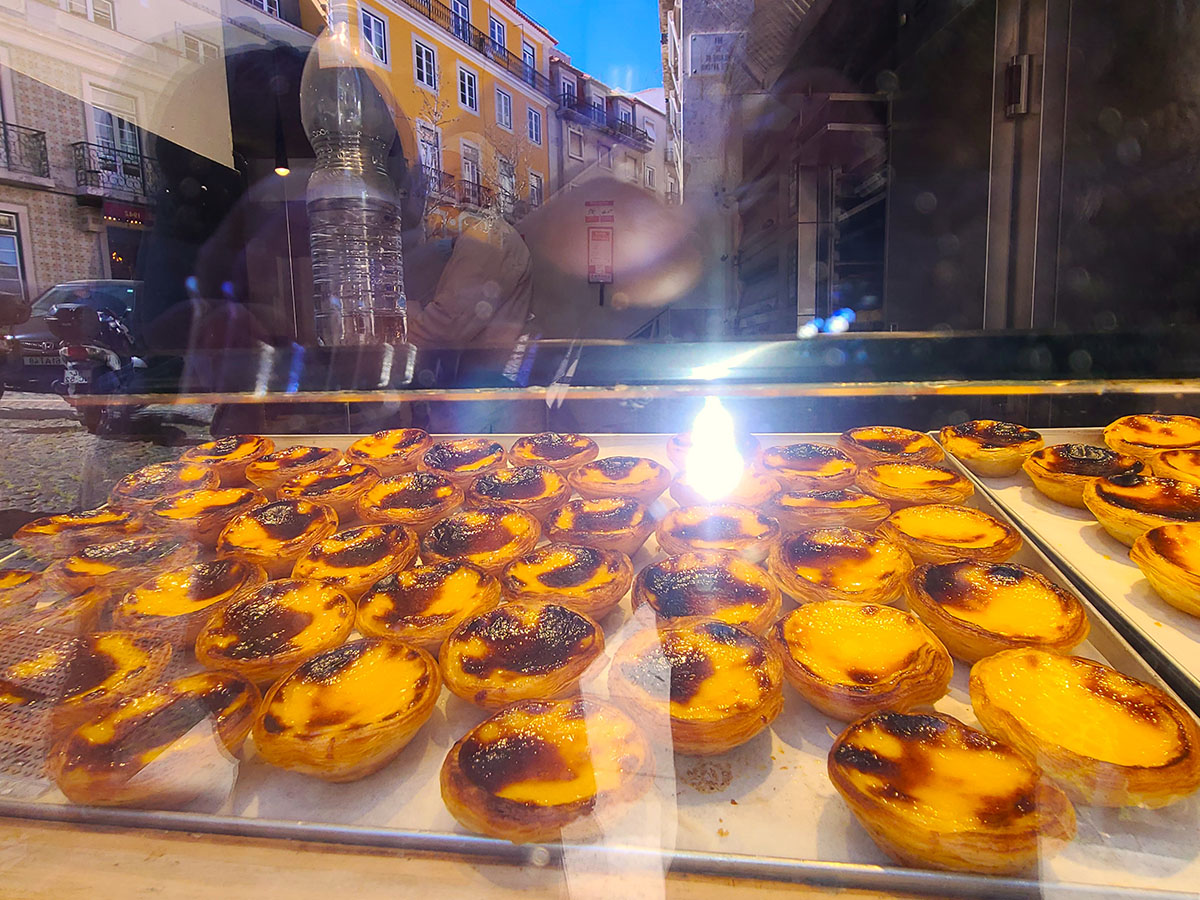
A left turn in the road onto Rua dos Bacalhoeiros reveals the elegant “Silva and Feijóo” store. This was the first in the chain of “Silva and Feijóo stores we were to come across in Portugal. Each one has a unique interior design. Flat cans of marinated seafood – from mussels, shrimp, sardines, and clams to tuna and cod – are adorned in vibrant, colored paintings of Portuguese towns. A woven rug covers the floor, and a crystal chandelier illuminates the store with subtle lighting. Shelves are stocked with bags of crunchy cookies, cherry liqueur, honey vinegar, and Seia cheese.
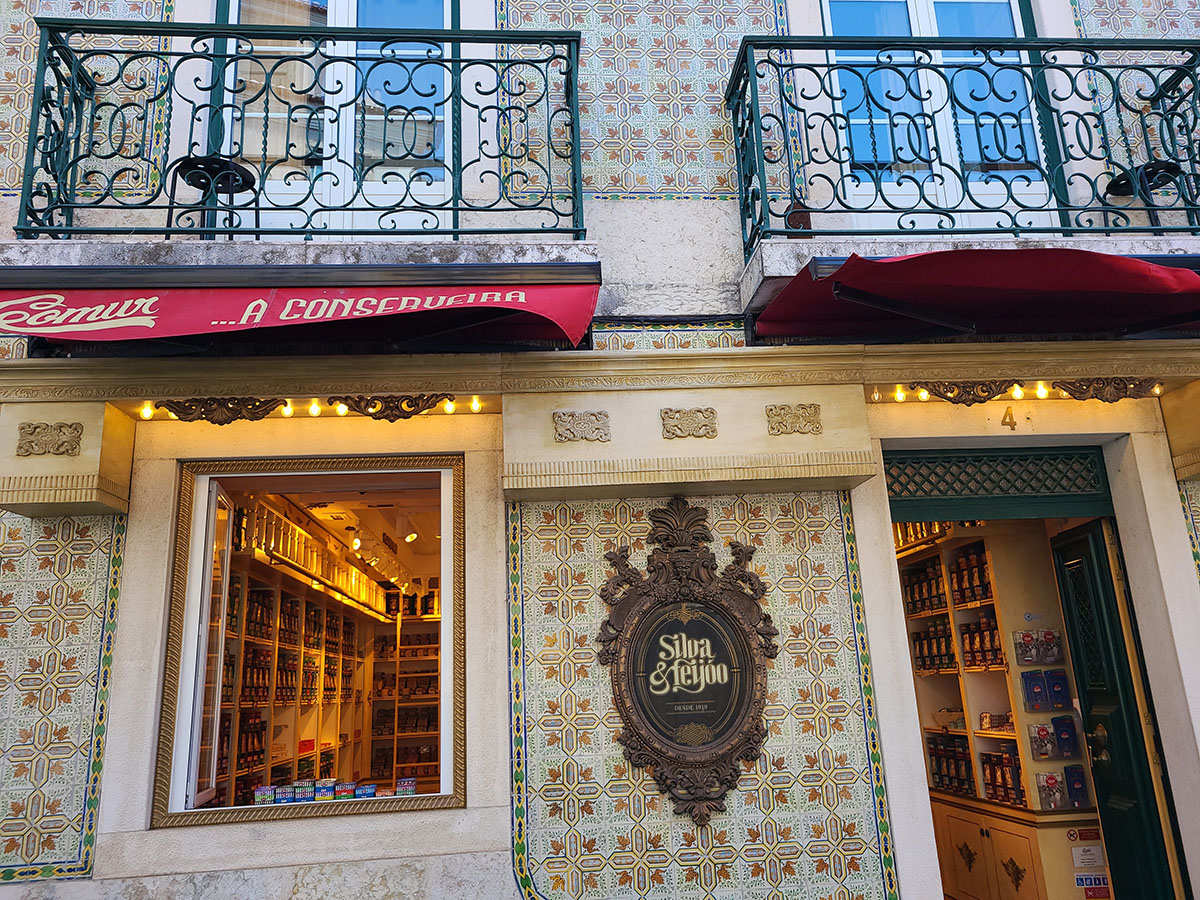
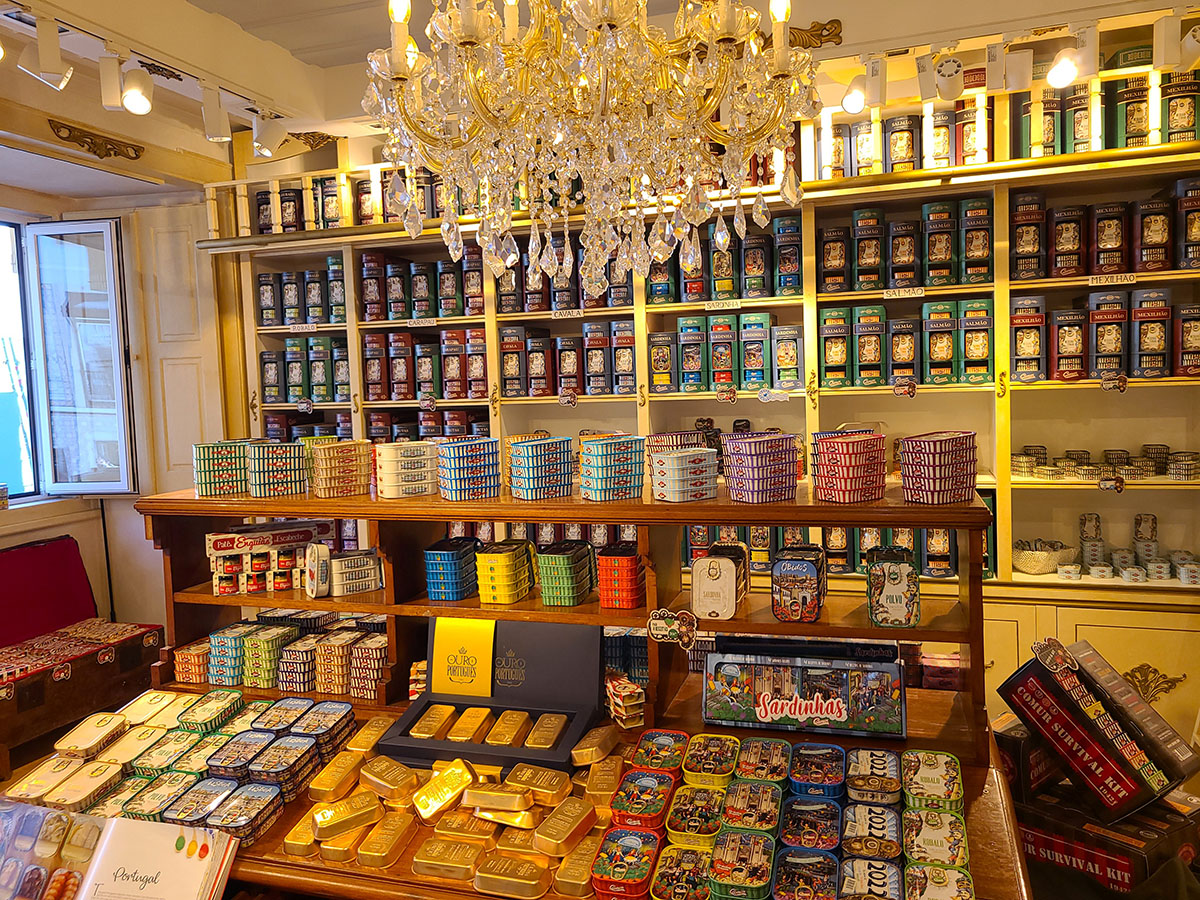
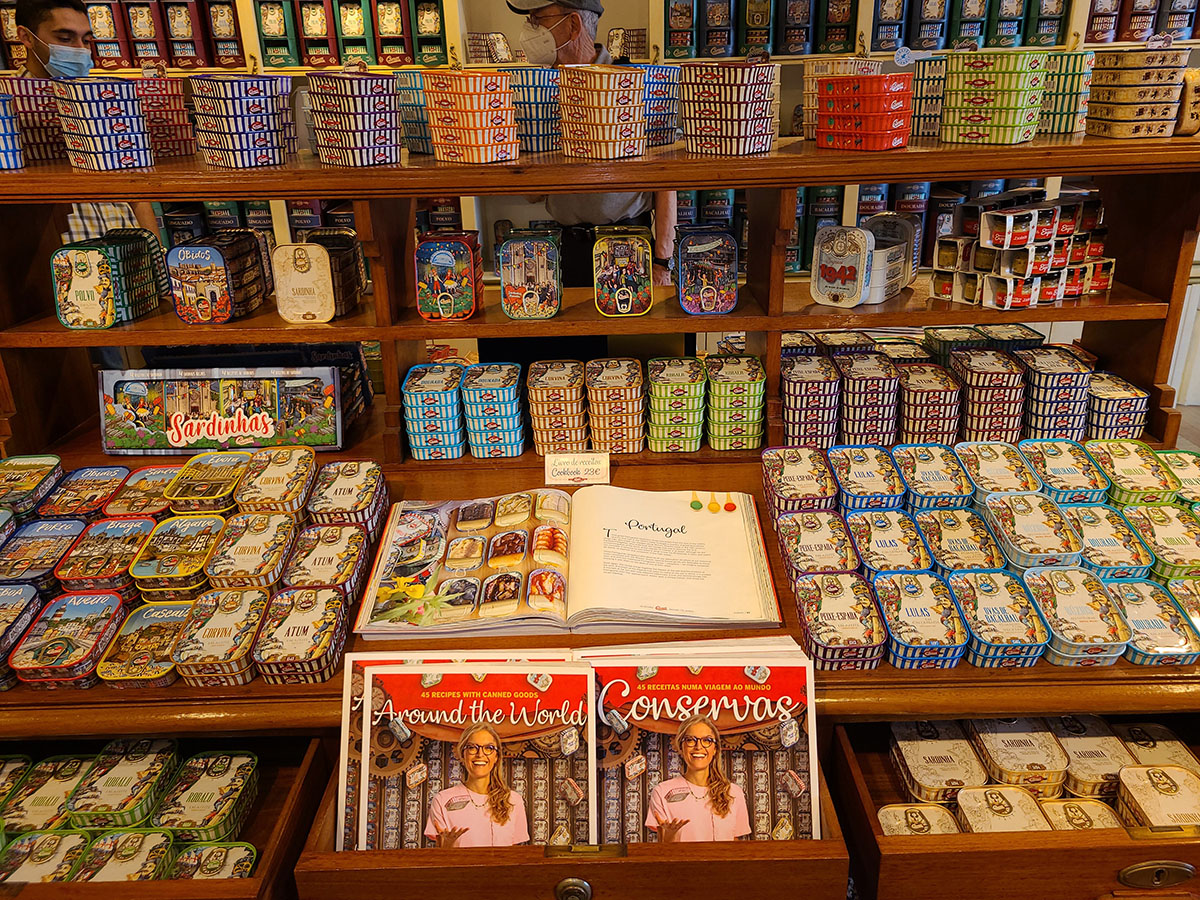
The winding uphill climb continues past stores selling renowned Portuguese ceramics and embroidered linens. It meanders up to Lisbon’s famous landmark – Castelo Sao Jose – a castle surrounded by ancient walls atop a hill that overlooks the city.
Tourists line up for hours to enter. (Buy tickets in advance and arrive early or towards the end of the day. Check the times. They vary according to the season.)
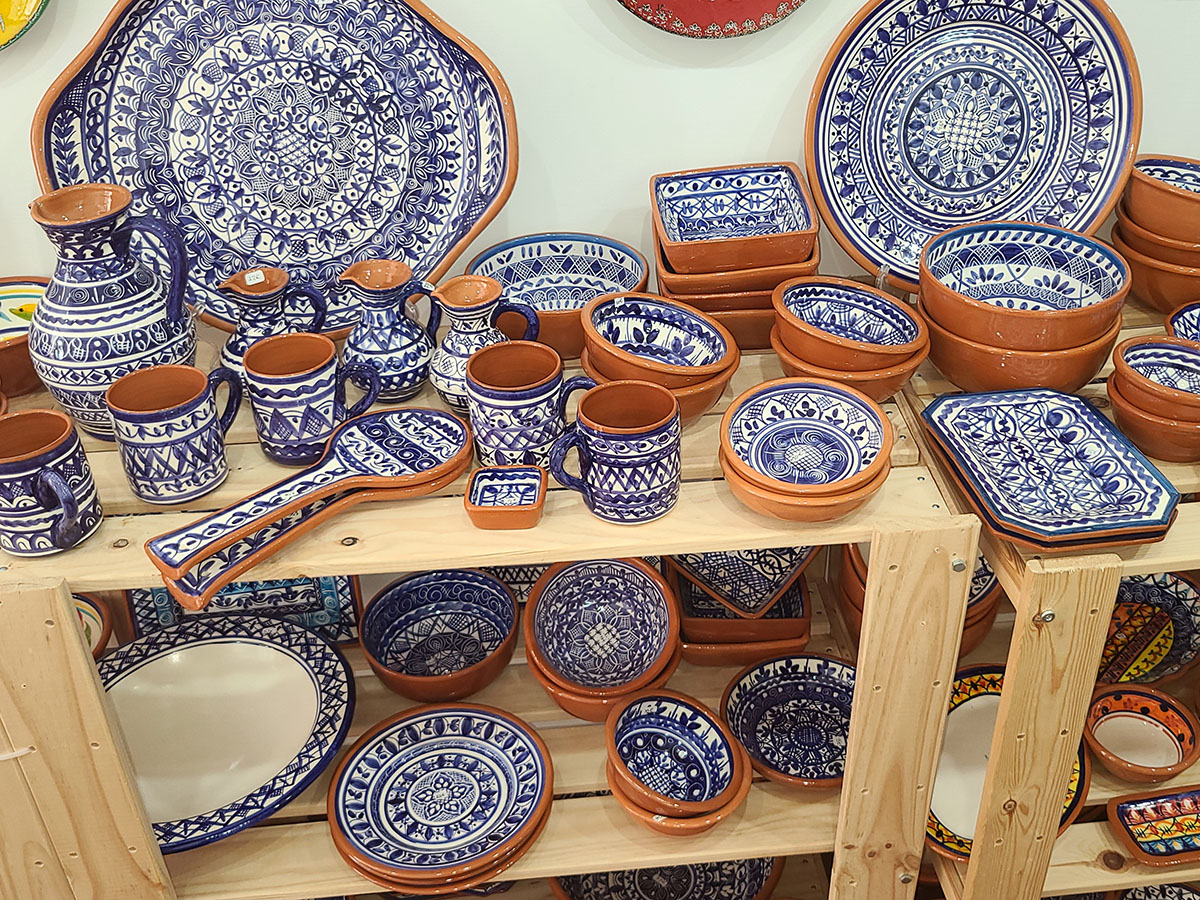
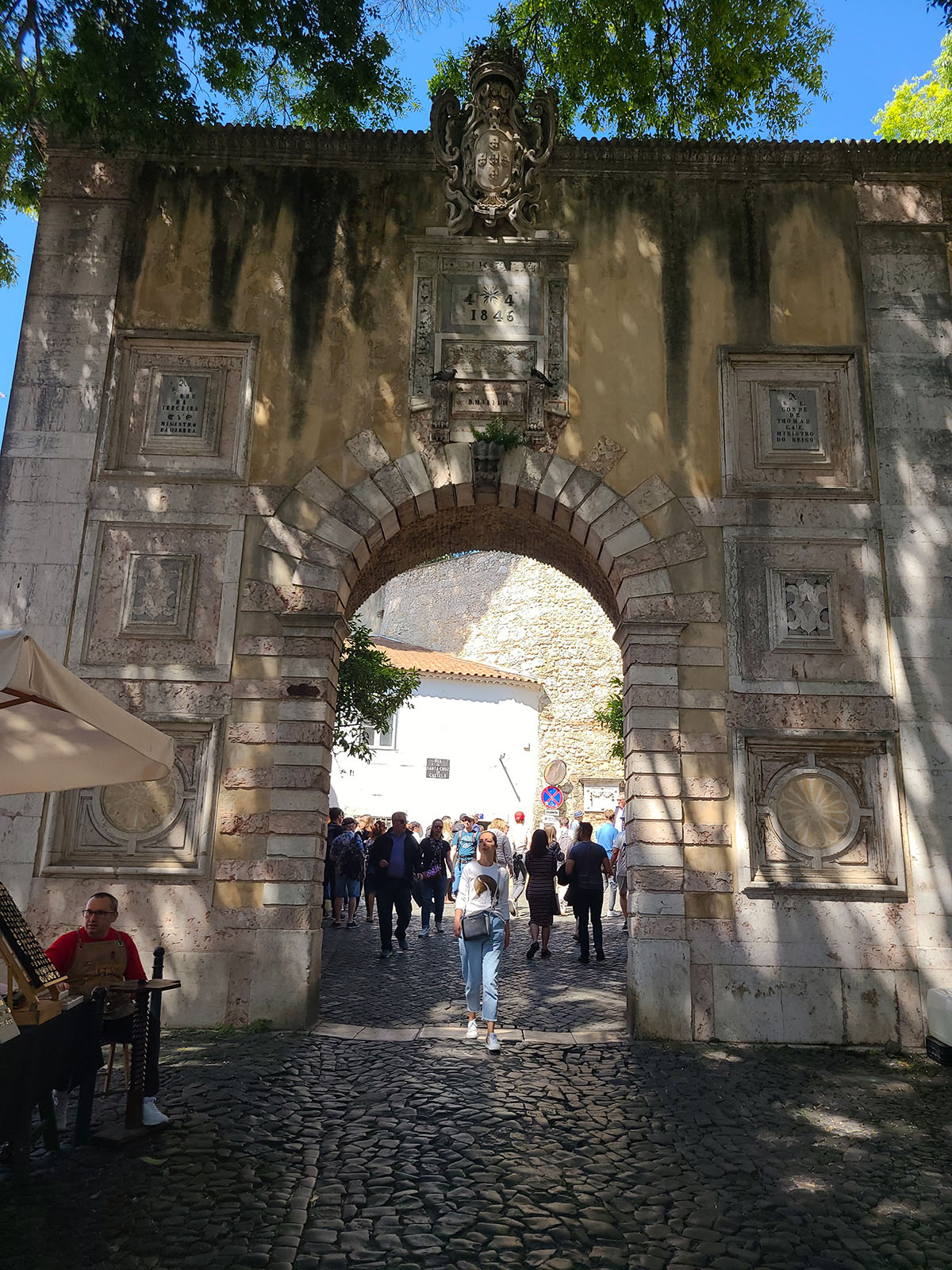 The Entrance to the ccastle grounds.
The Entrance to the ccastle grounds.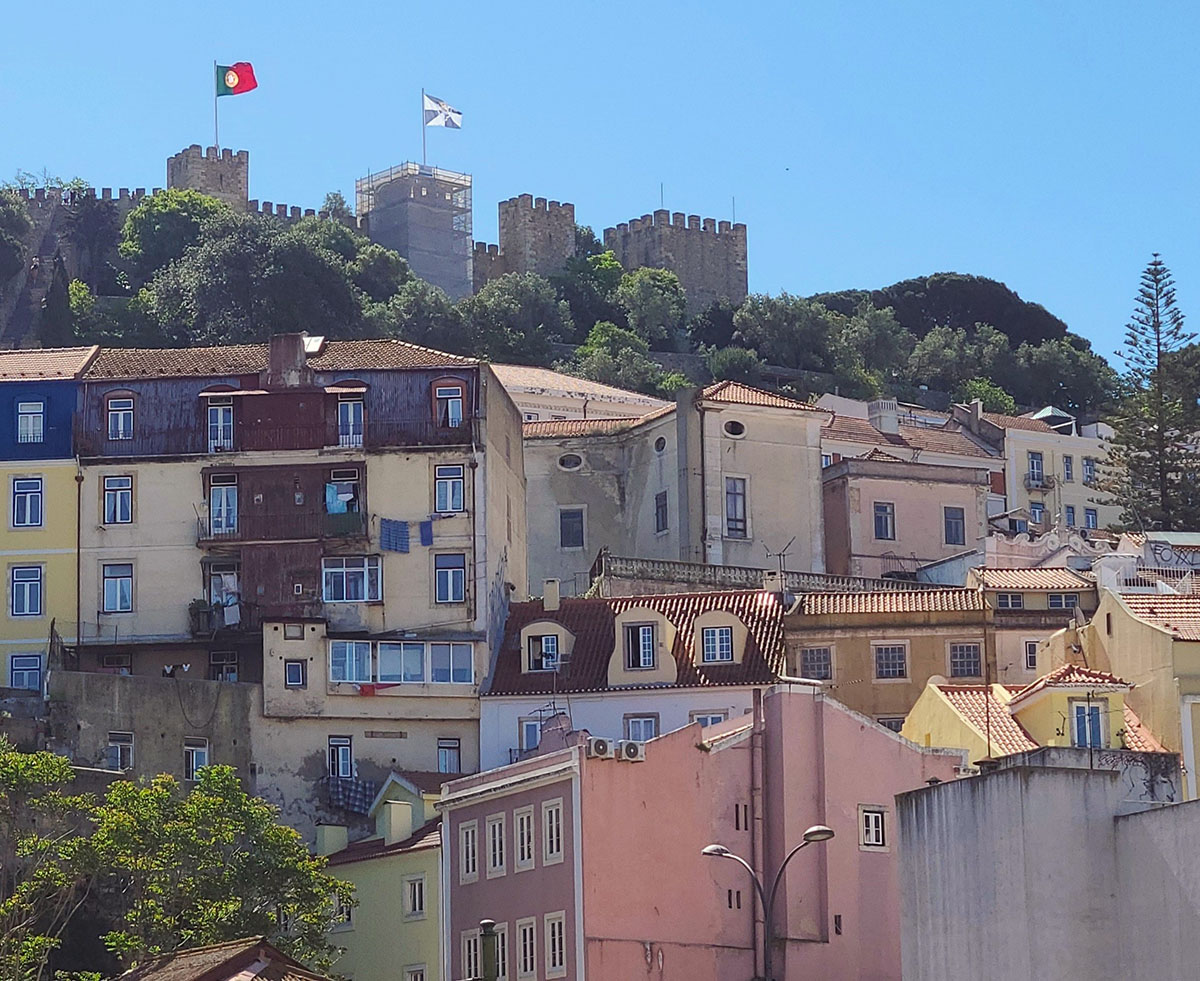 View from below of the Castle-CasteloSao Jose.
View from below of the Castle-CasteloSao Jose.It’s a downhill walk from the castle to the famous medieval Alfama neighborhood. Alfama is Lisbon’s oldest neighborhood. It was built in the 18th century during the Muslim conquest of Portugal and Spain. It has been revived to once again become Lisbon’s most lively and charming “village” within the city. Tightly packed buildings housing bakeries, antique shops, bars, and restaurants line the narrow alleys.
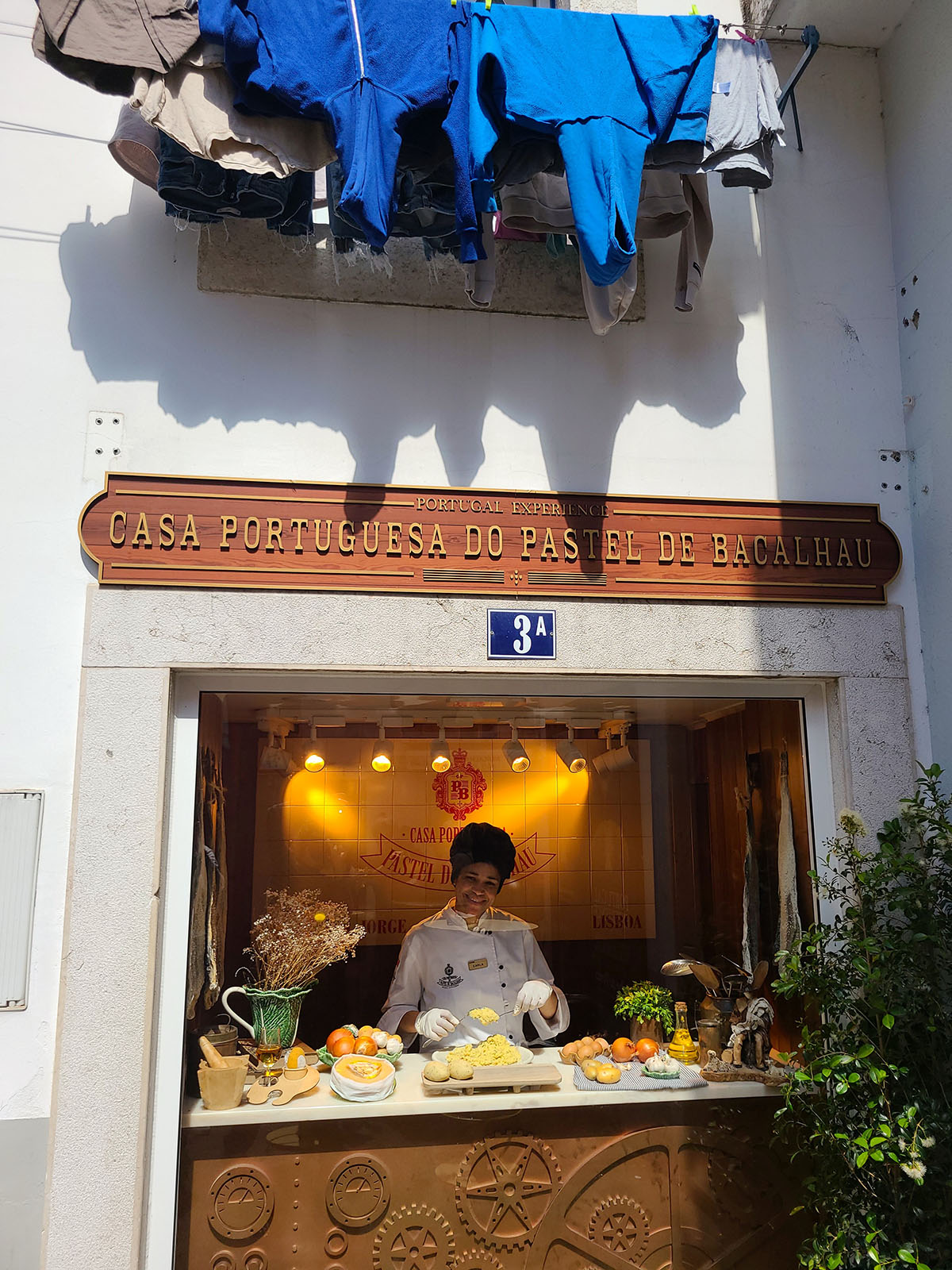
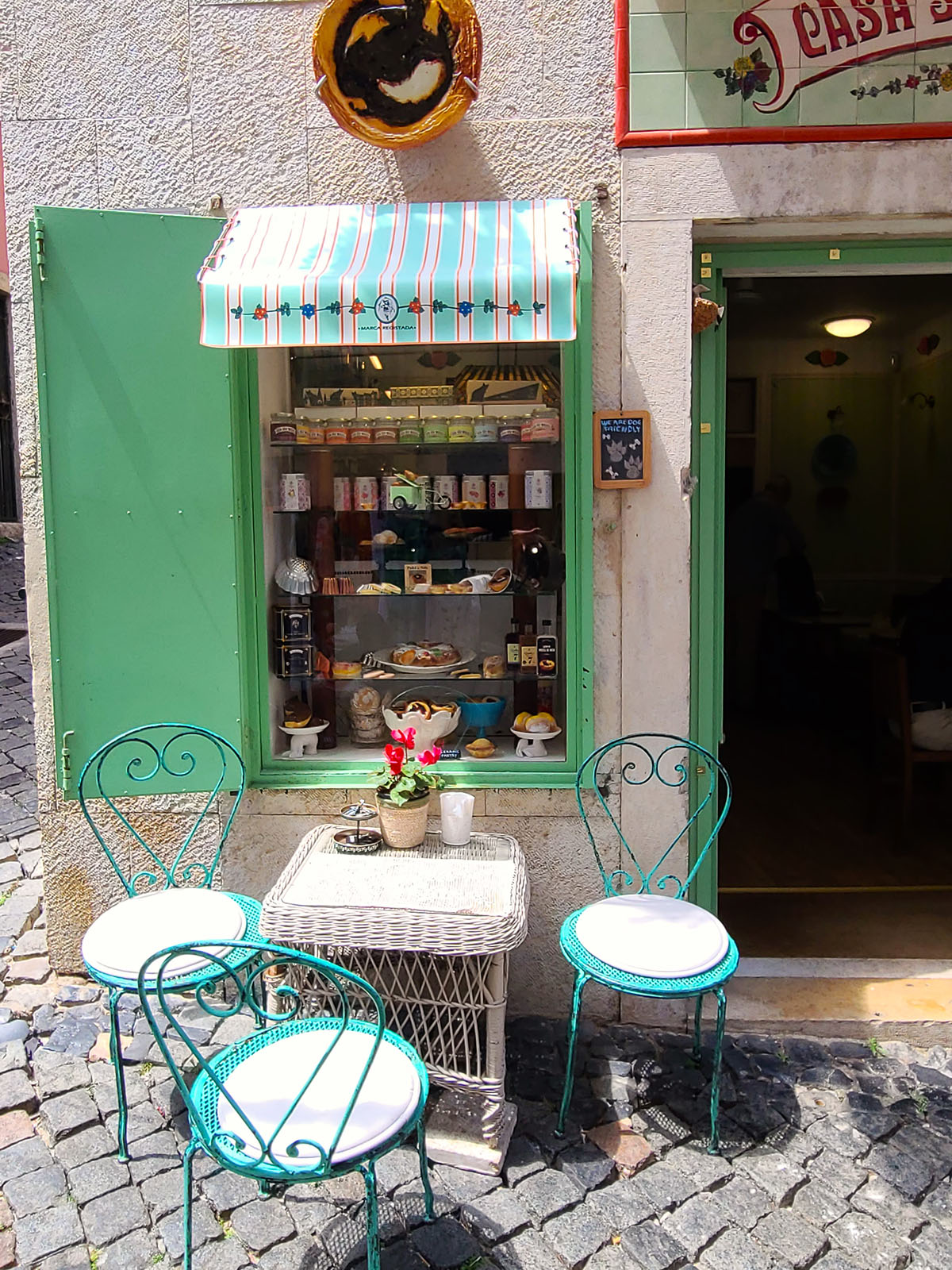
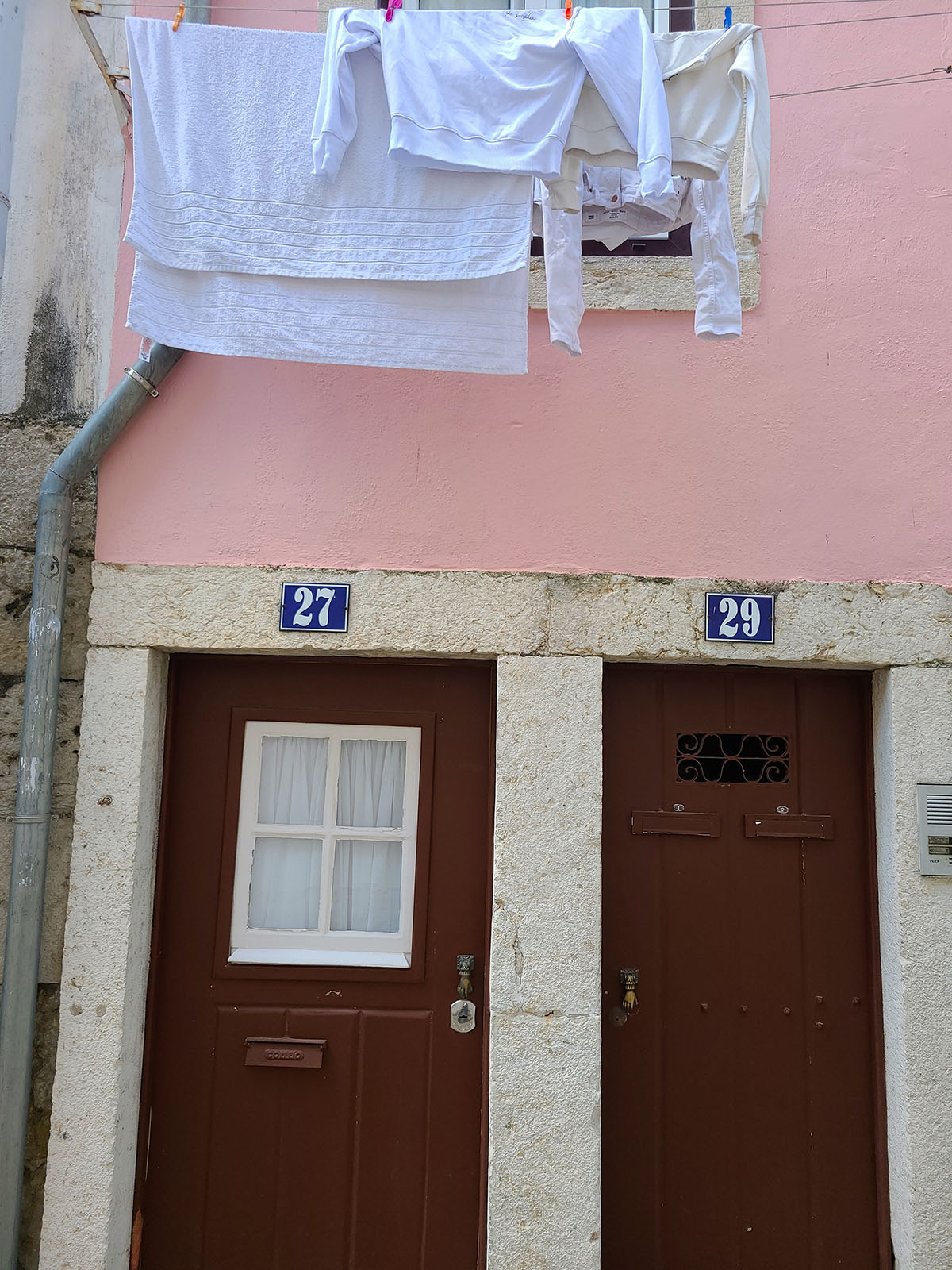
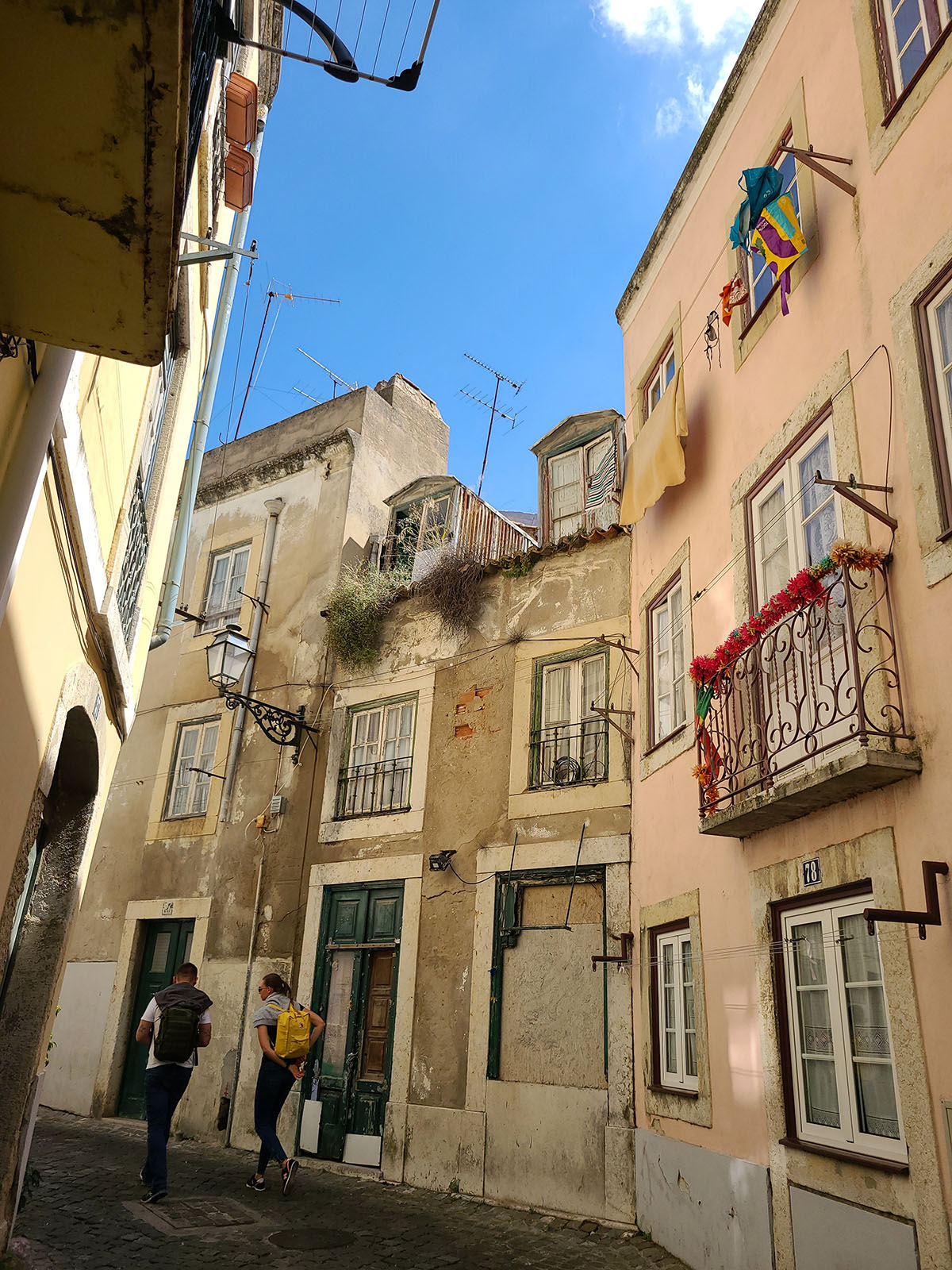
At night, restaurants are packed to capacity with diners enjoying freshly caught fish and seafood while being serenaded by Fado singers and musicians.
We particularly liked the Alfama Grill both for the food and the rotating groups of Fado singers and musicians.
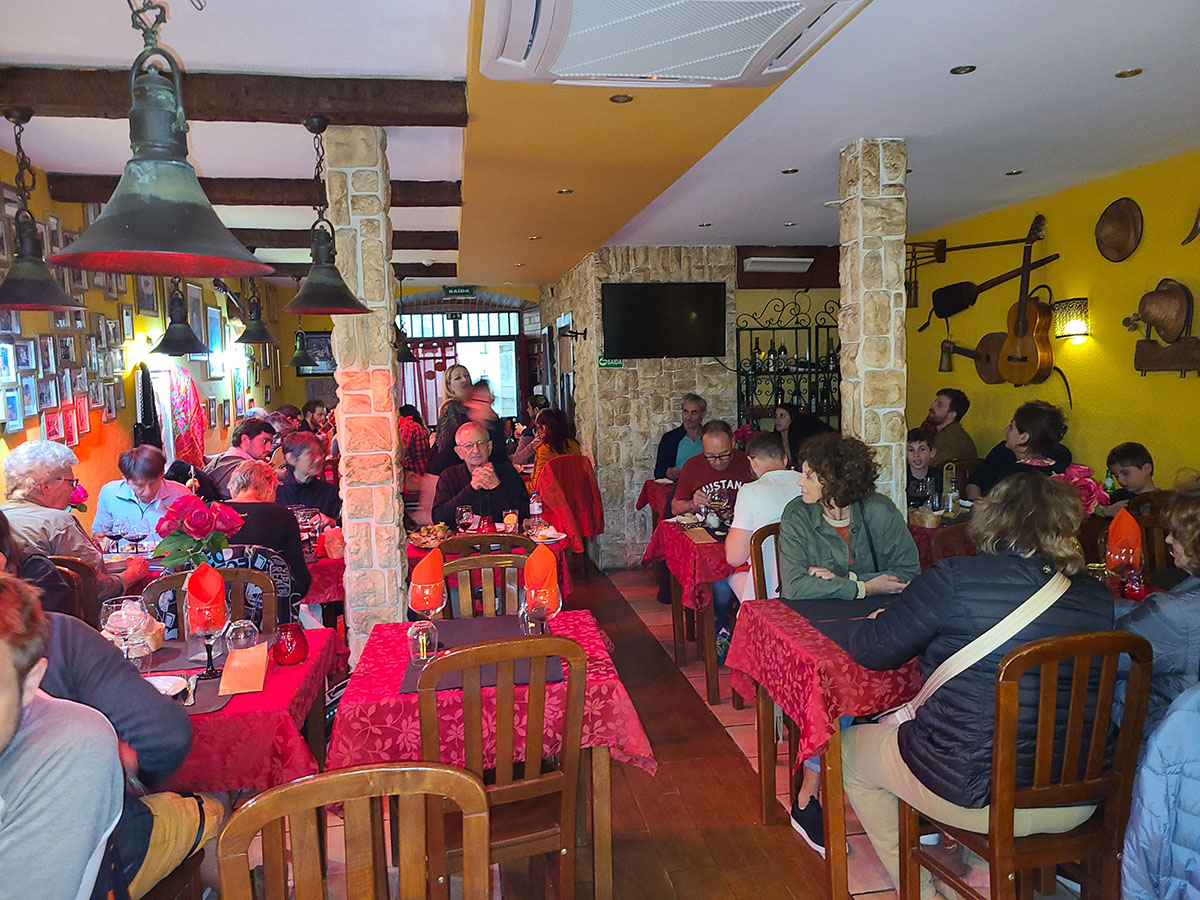
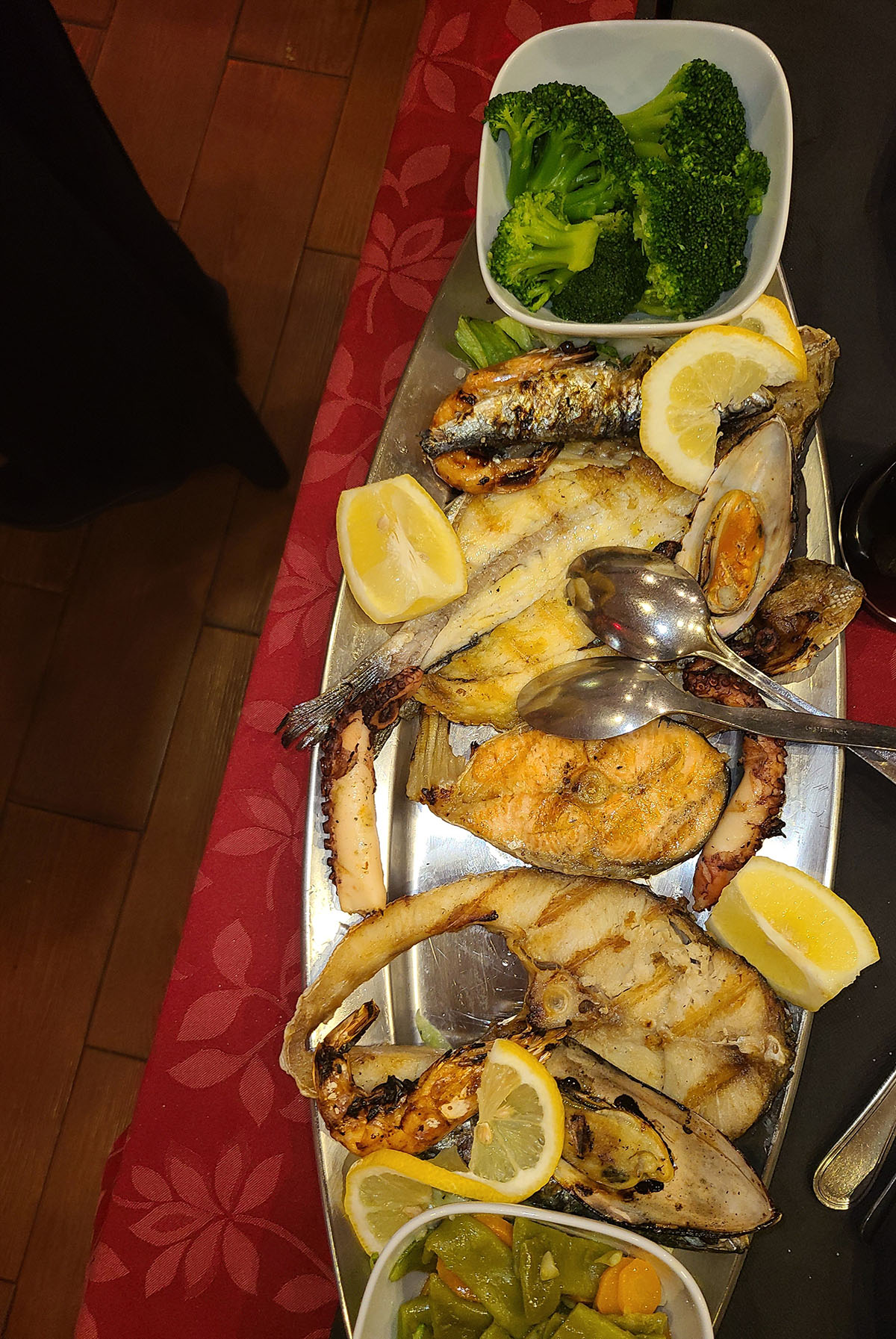
Lisbon has numerous praϛas (squares), all of which are impressive in size. Praϛa do Comércio faces the waterfront and boasts a statue of King José I, mounted on his horse, said to have been unveiled with much pomp and splendor on his birthday – June 6, 1775.
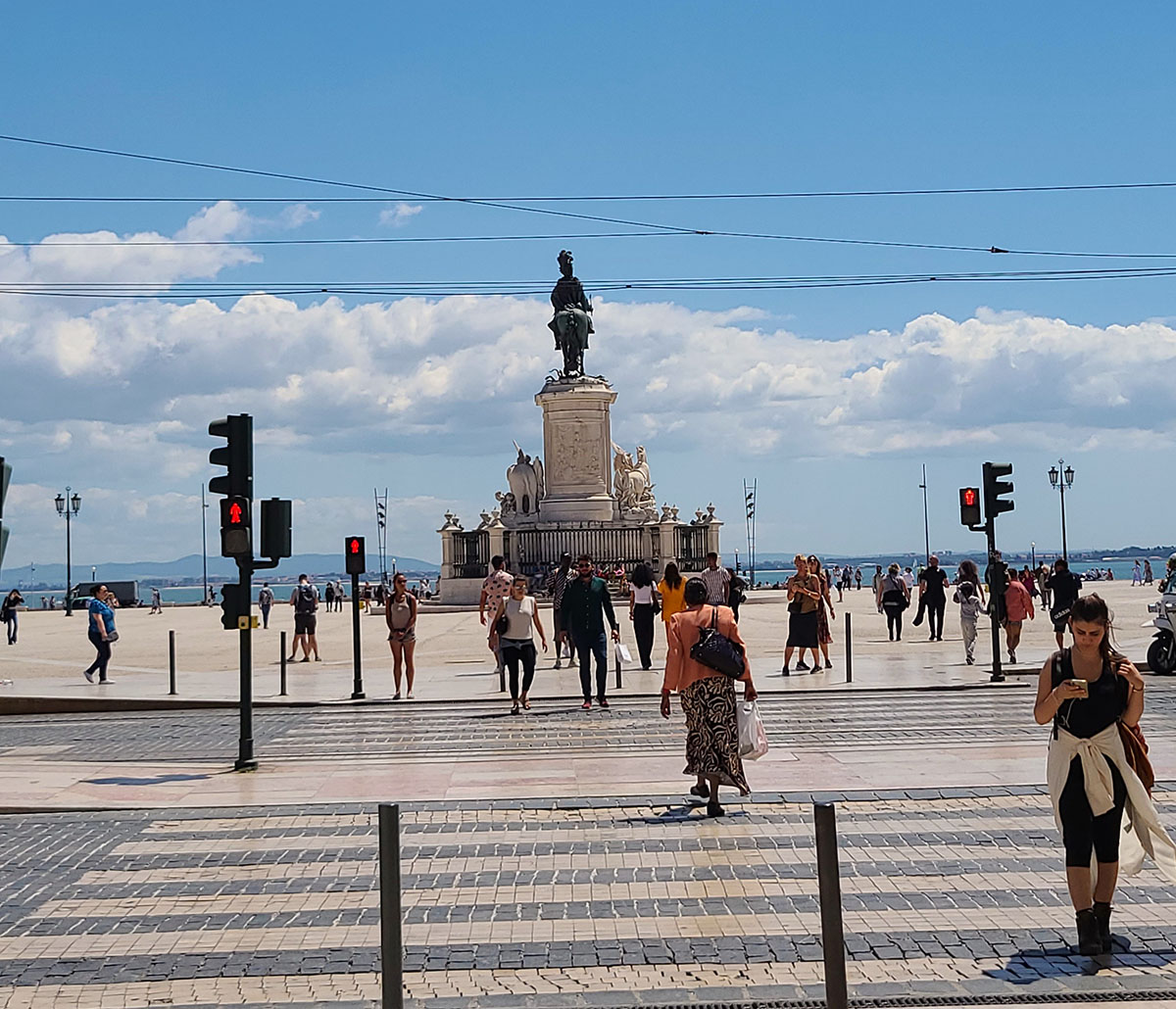
The imposing Arch of Rua Augusta, embellished with sculptures, leads from Praca do Comércio to a lively pedestrian street with mosaic floor tiles flanked by an array of boutiques, coffee shops, bakeries, and restaurants.
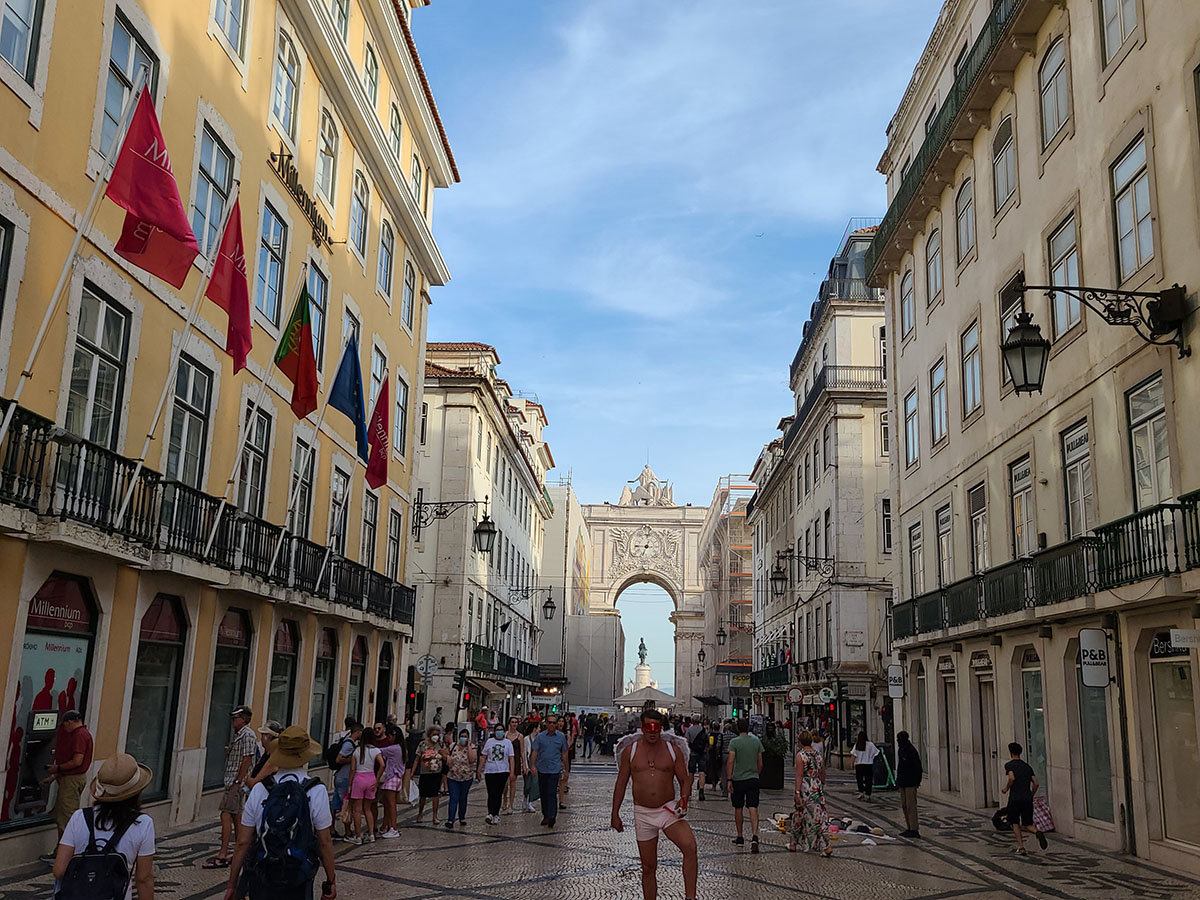
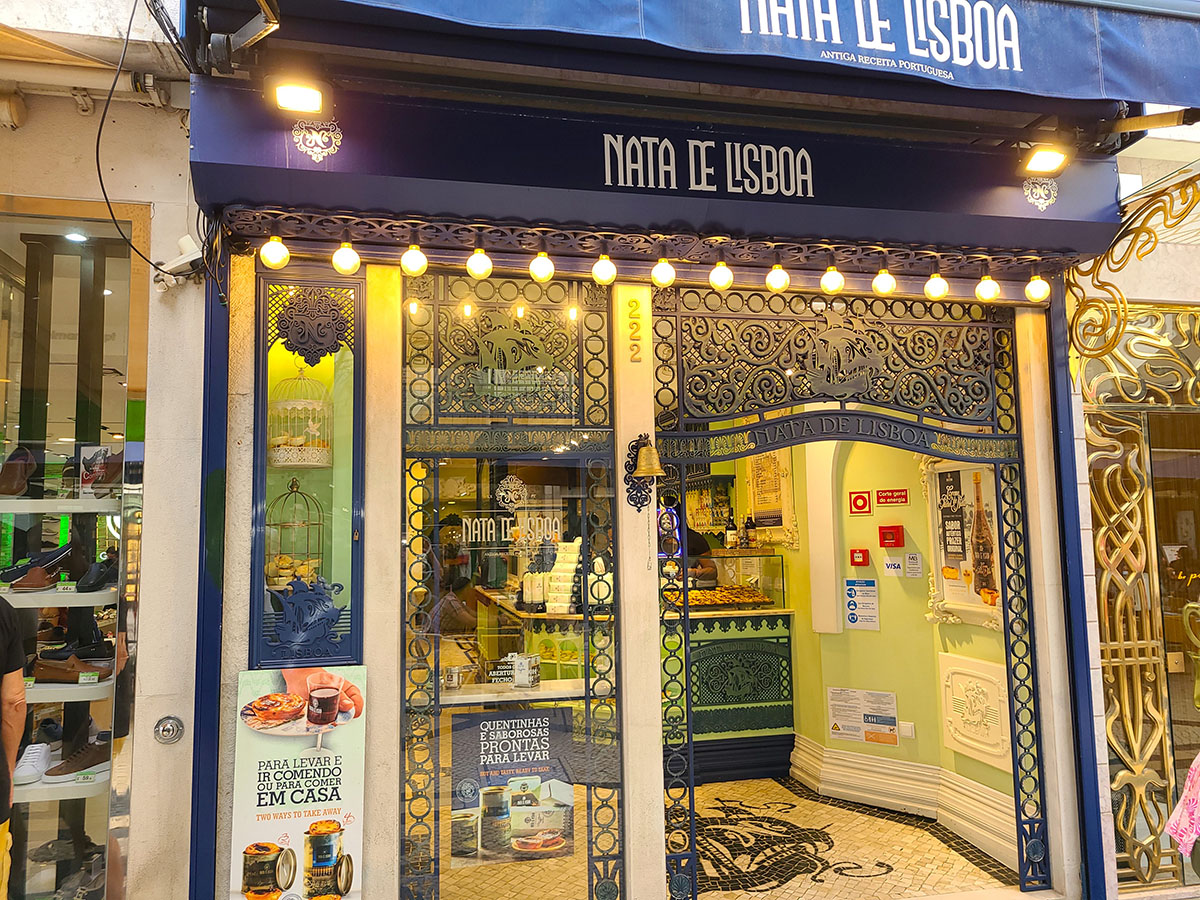
The pedestrian walkway runs from Praϛa do Comércio to the most atmospheric and enchanting praϛa in Lisbon – Praϛa Dom Pedro IV. Also known as – Praϛa Rossio, it is carpeted in patterned black and white pebble stones, fountains are adorned with sculptures, the statue of King Dom Pedro IV sits atop a 90-foot column, and the exquisite Rossio train station – built in the Neo-Manueline style – stands between Rossio and Restauradores Squares.
Rossio Square was the site of bullfights, public celebrations, protests, and executions in the Middle Ages. Today, it’s a dynamic meeting place where cafes spill out onto the Square and jacaranda trees burst with purple blossoms in the springtime.
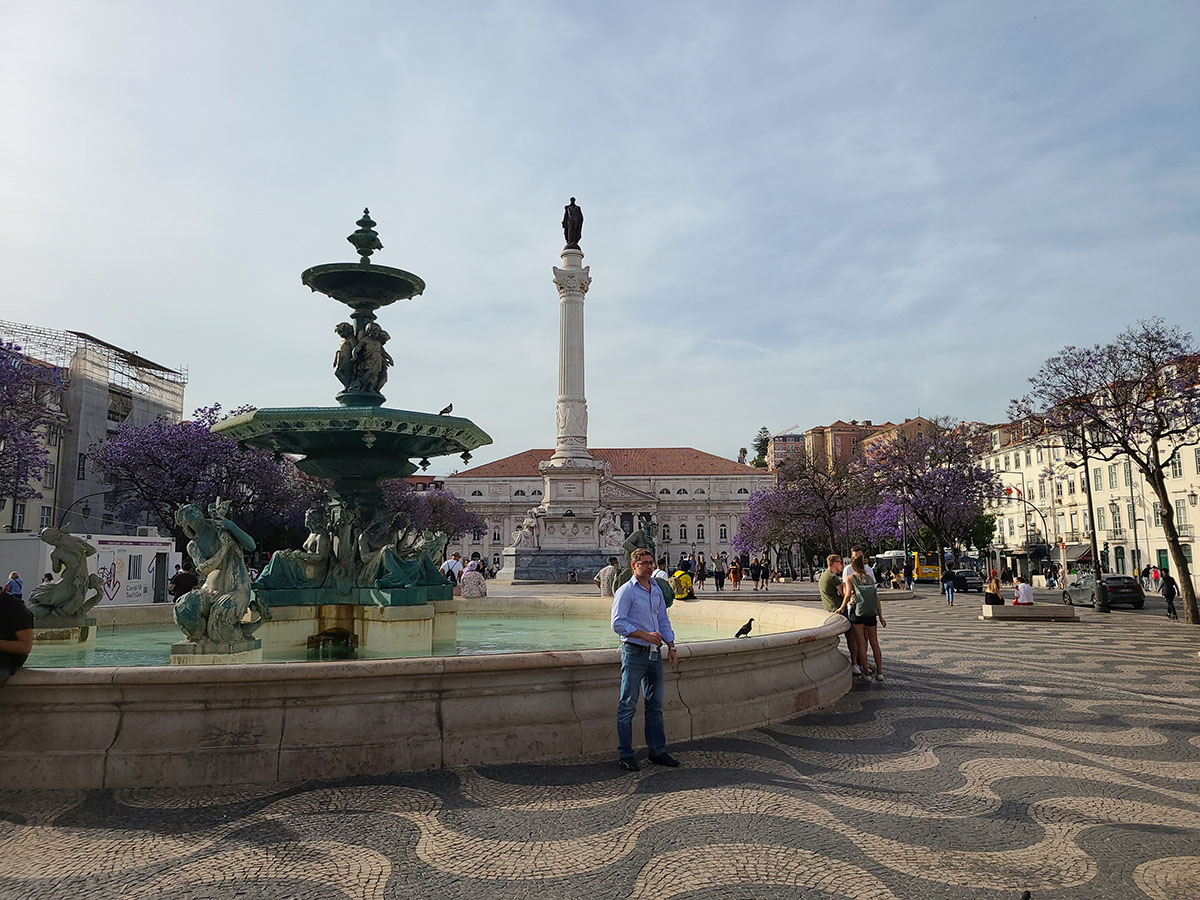
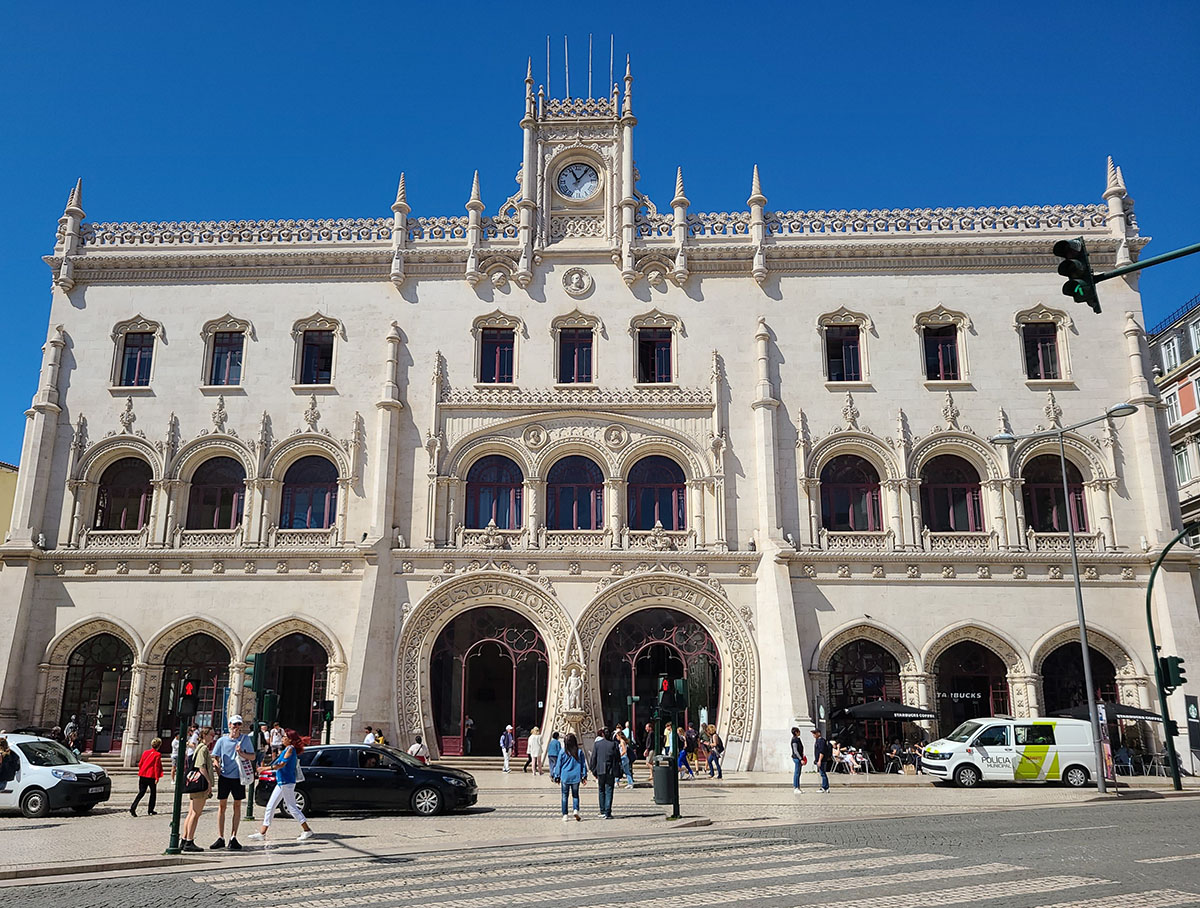 Rossio Train Station.
Rossio Train Station.Praϛa Restauradores leads onto Avenida da Liberdade, an expansive boulevard divided by towering, shady trees and lush gardens. It is said that the design of the boulevard was inspired by the layout of the Champs Elysees in Paris.
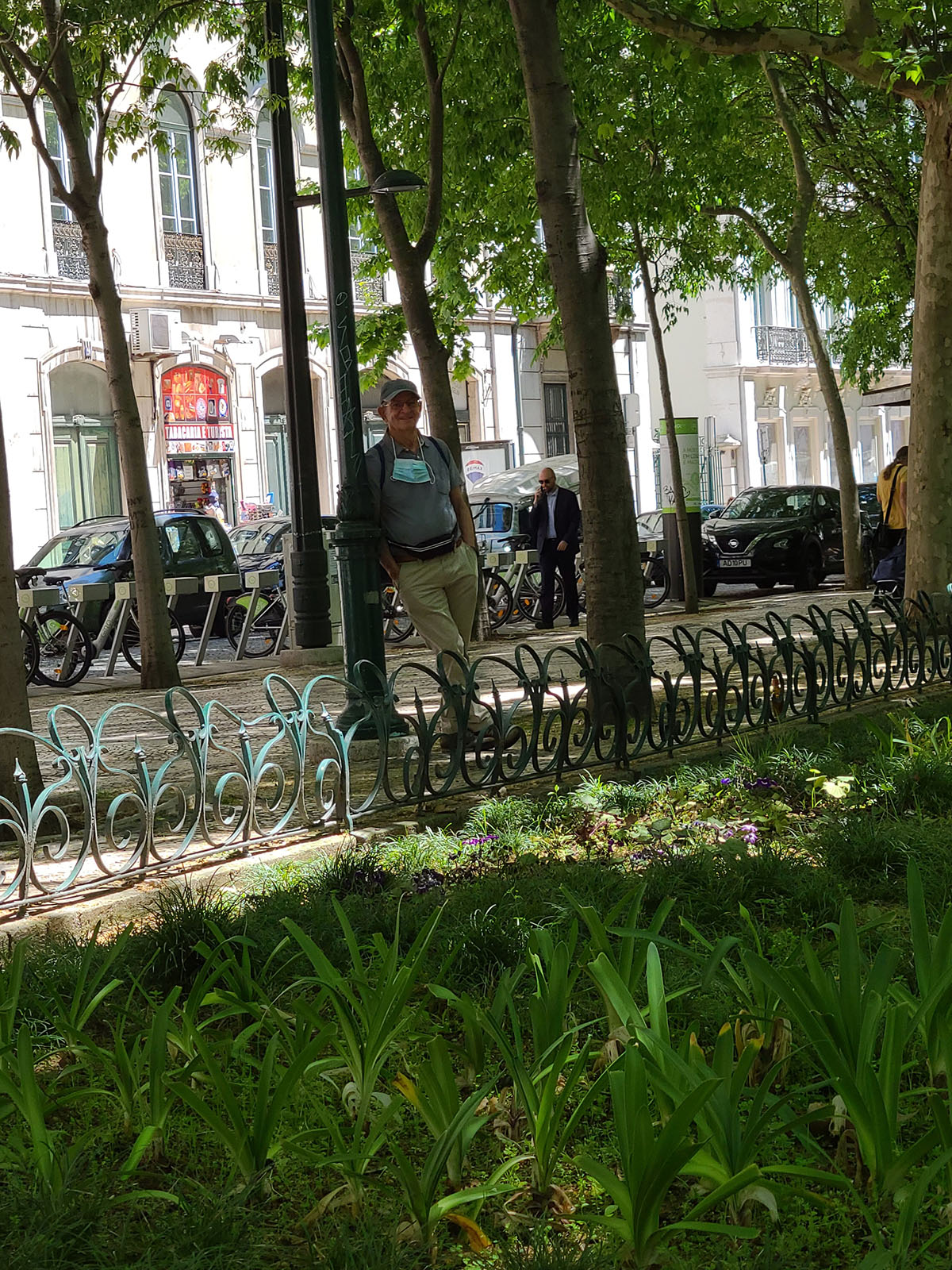
As one of the most upscale areas of Lisbon, Avenida da Liberdade is home to embassies, luxury five-star hotels, boutiques representing international high-end clothing designers, and fine dining. The elegant buildings that line the boulevard reflect various architectural styles, including Art Nouveau.
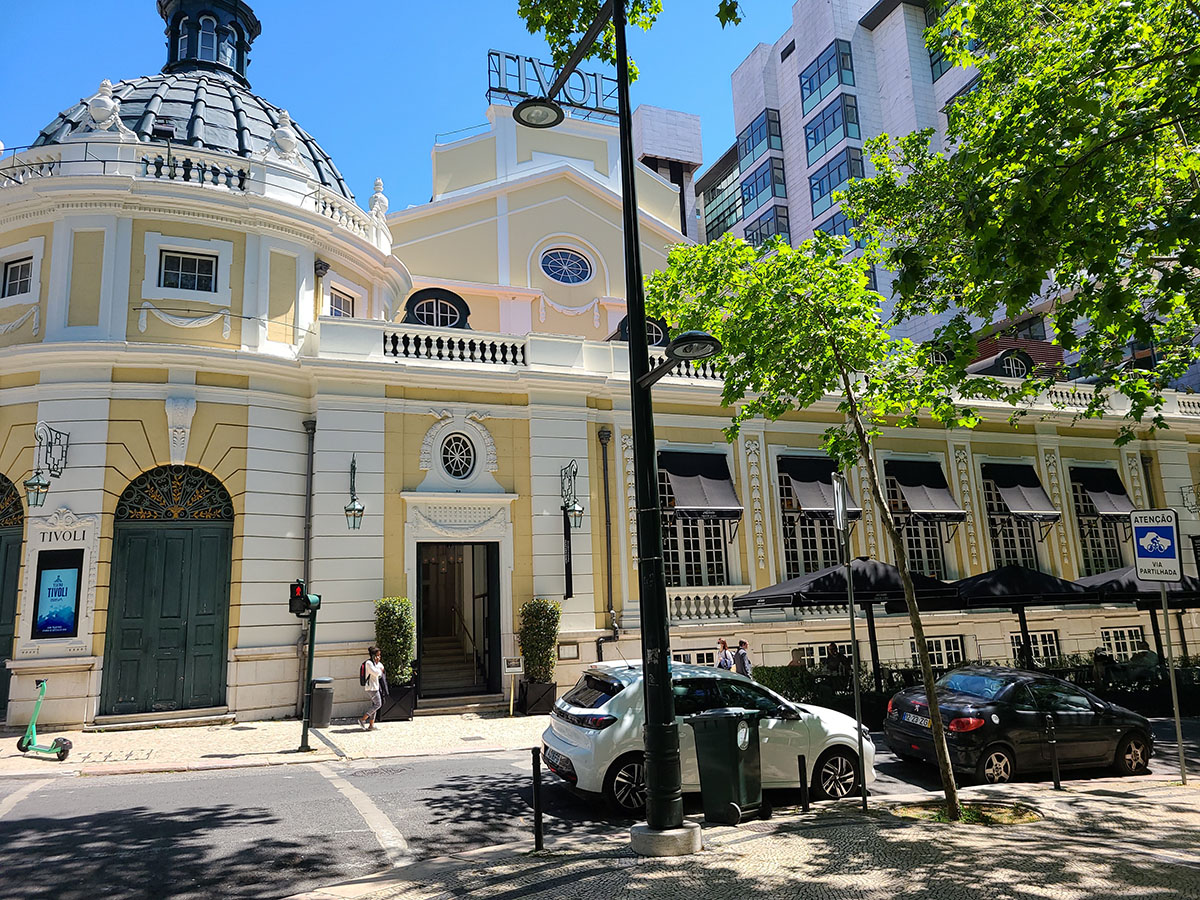
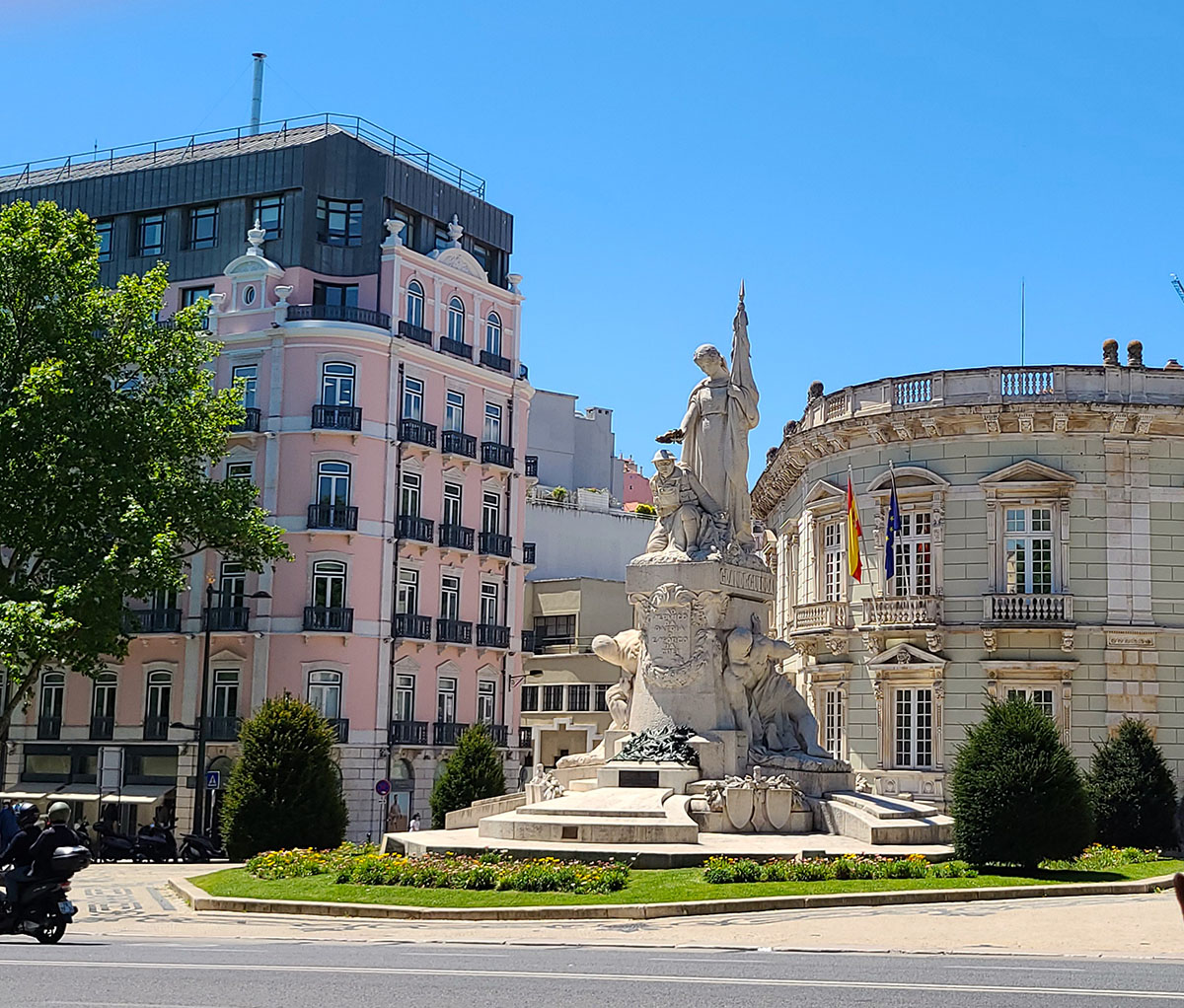
Elevador de Santa Justa – located a few blocks from Rua Augusta, where it meets Rua de Santa Justa – is a must-see landmark of central Lisbon’s Baixa district. Designed by a student of Gustave Eiffel (the architect of the Eiffel Tower in Paris,) it reaches for the sky – connecting the lower Baixa neighborhood with picturesque Largo do Carmo Square and the upper Bairro Alto, a trendy, lively district, especially at night when Fado music drifts out of restaurants and bars.
The elevator’s intricate ironwork has a delicate lace-like quality; it’s a masterpiece of design and architecture. Crowds line up for hours to ride the elevator. I would suggest arriving early in the morning to avoid the long wait.
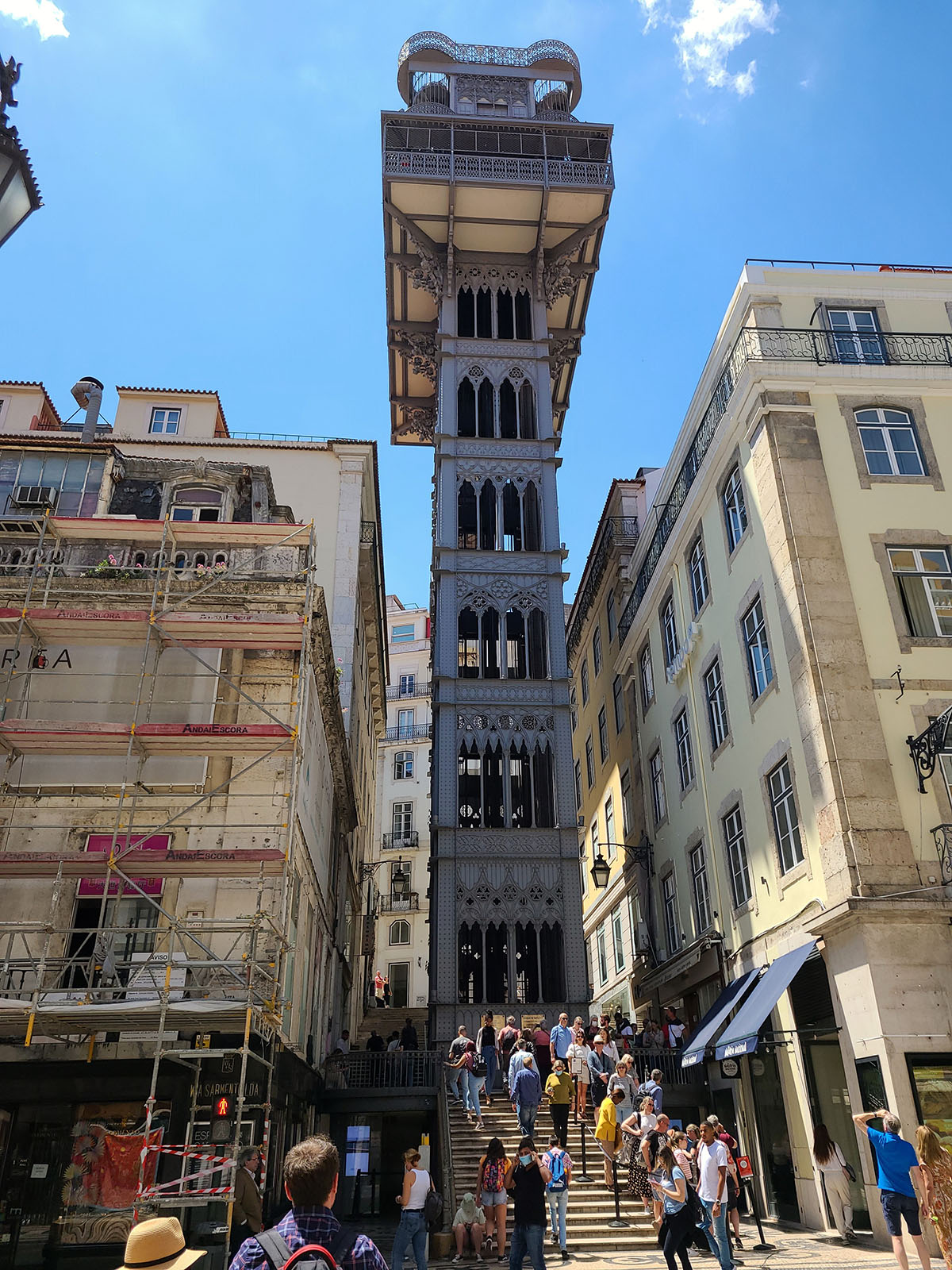
When in Lisbon, one can’t miss a ride on the famous Yellow Tram Cars that rattle up the steep hills. Tram #28 is the most popular. You’ll spot it in the Alfama, Baixa, and Barrio Alto neighborhoods. Purchase an all-day, hop-on, hop-off ticket at Praϛa do Martim Moniz or a metro station.
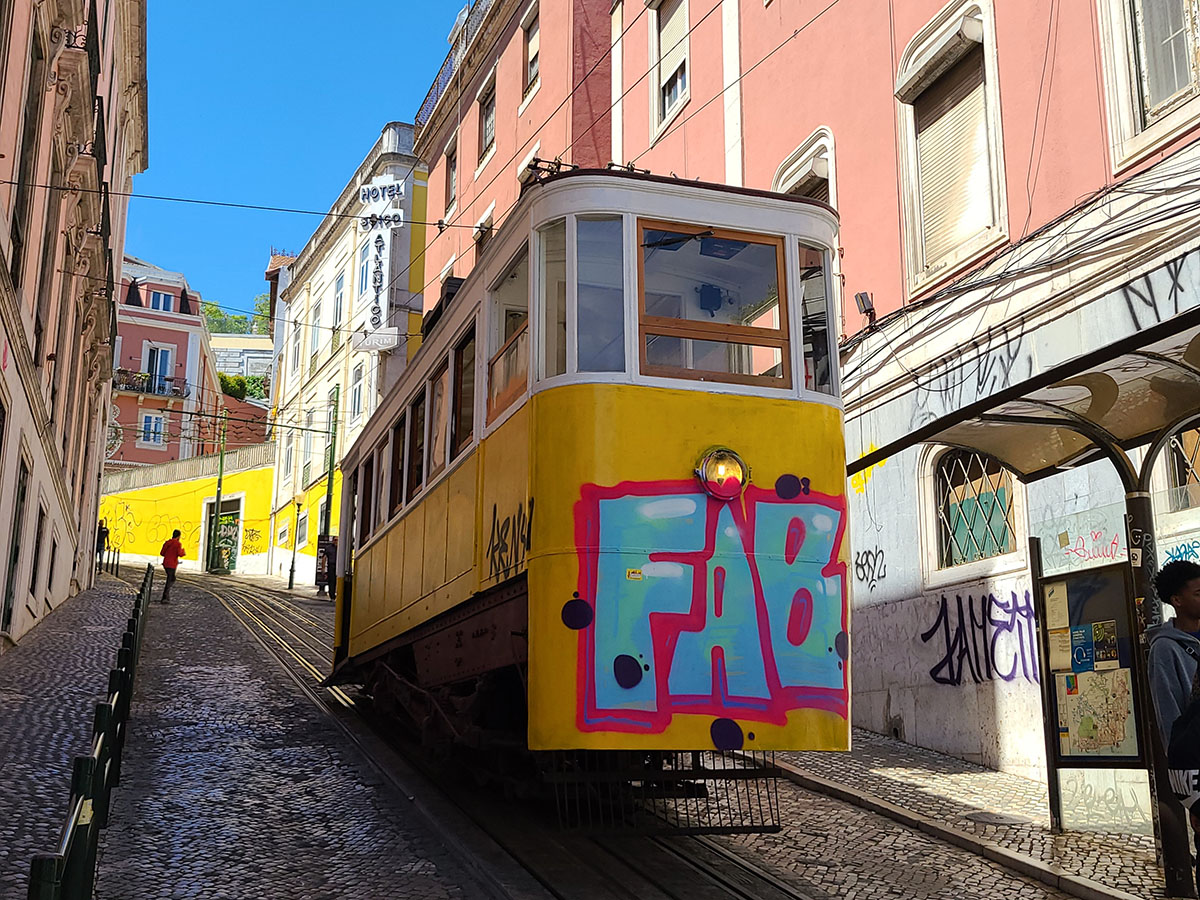
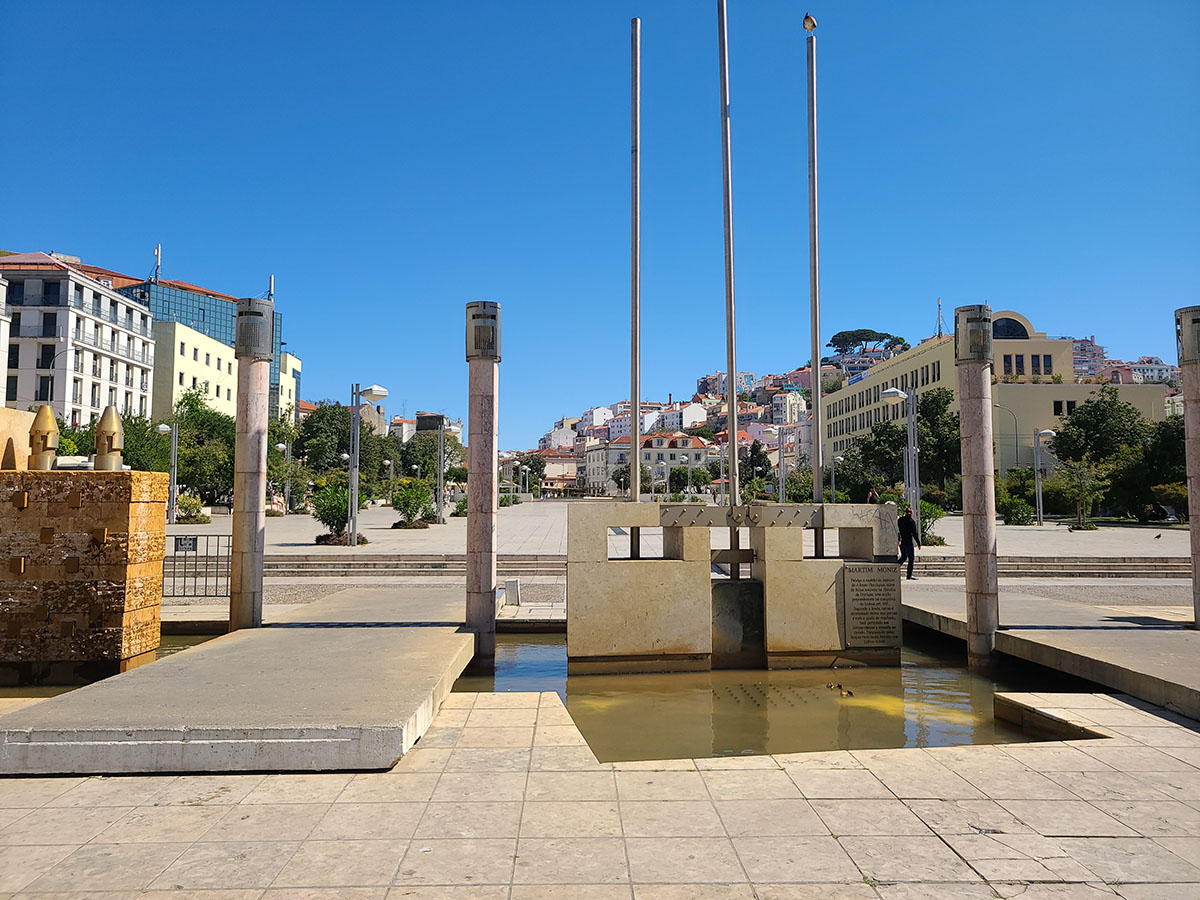 Praca do Martim Moniz.
Praca do Martim Moniz.The LX Factory in Alcantara is an Uber ride from central Lisbon. It can also be reached by tram, bus, or train. Built in 1846, it was an industrial factory complex where sewing thread and fabrics were manufactured. Today, the “Companhia de Fiacão e Tecidos” feels like a self-contained village covering 6.17 acres that has been repurposed into a hip, youthful, vibrant environment for artists, craftsmen, interior designers, bespoke clothing, fabrics, furniture, bookstores, ceramics, jewelry, bars, and of course, restaurants.
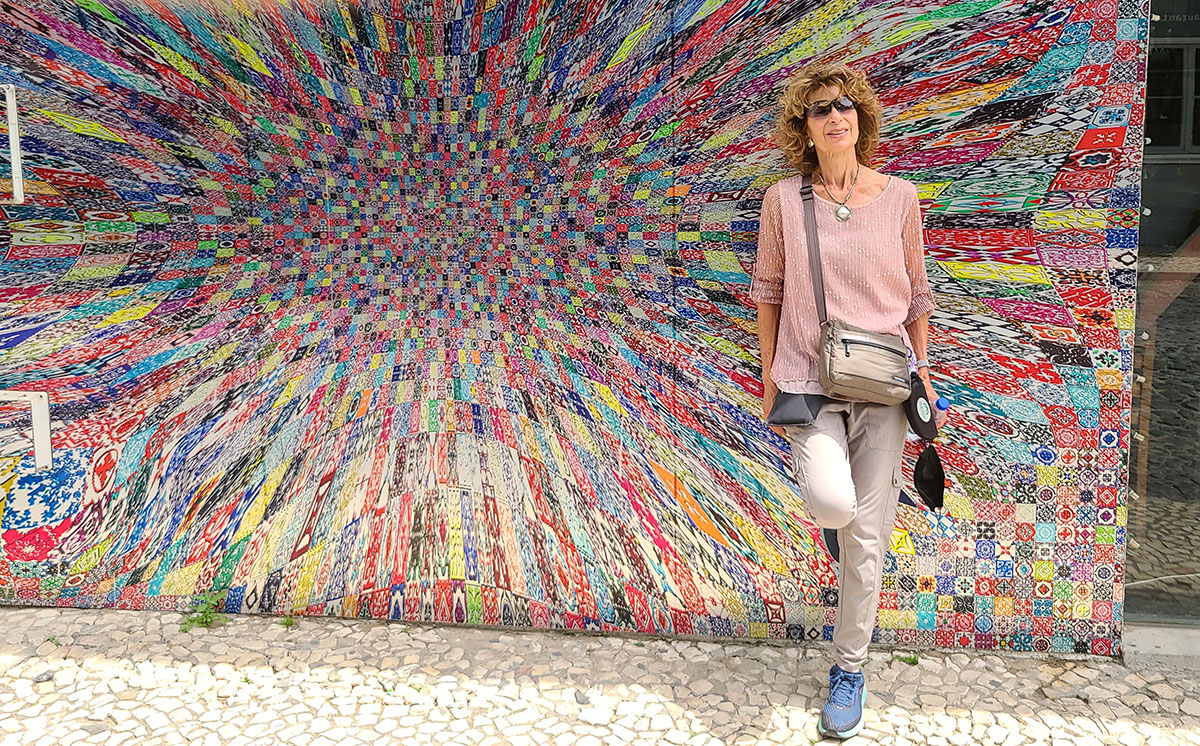 A plain wall becomes a work of art, at the LX factory.
A plain wall becomes a work of art, at the LX factory.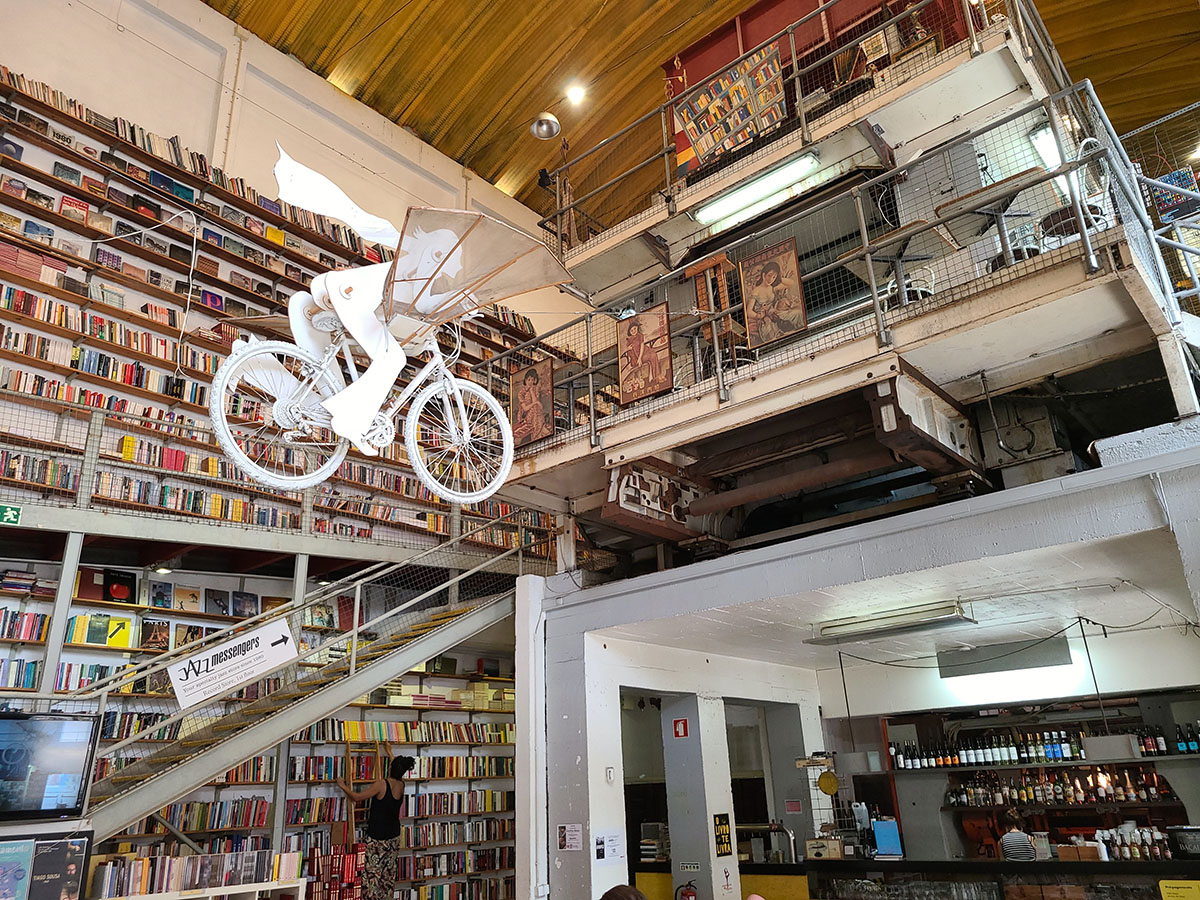 A bookstore with a difference!
A bookstore with a difference!The LX Factory sits beneath a toffee-apple-red bridge reminiscent of the Golden Gate Bridge. It was completed in 1966. A few hours at the LX Factory that ends with a leisurely lunch and a glass of wine is a worthwhile experience.
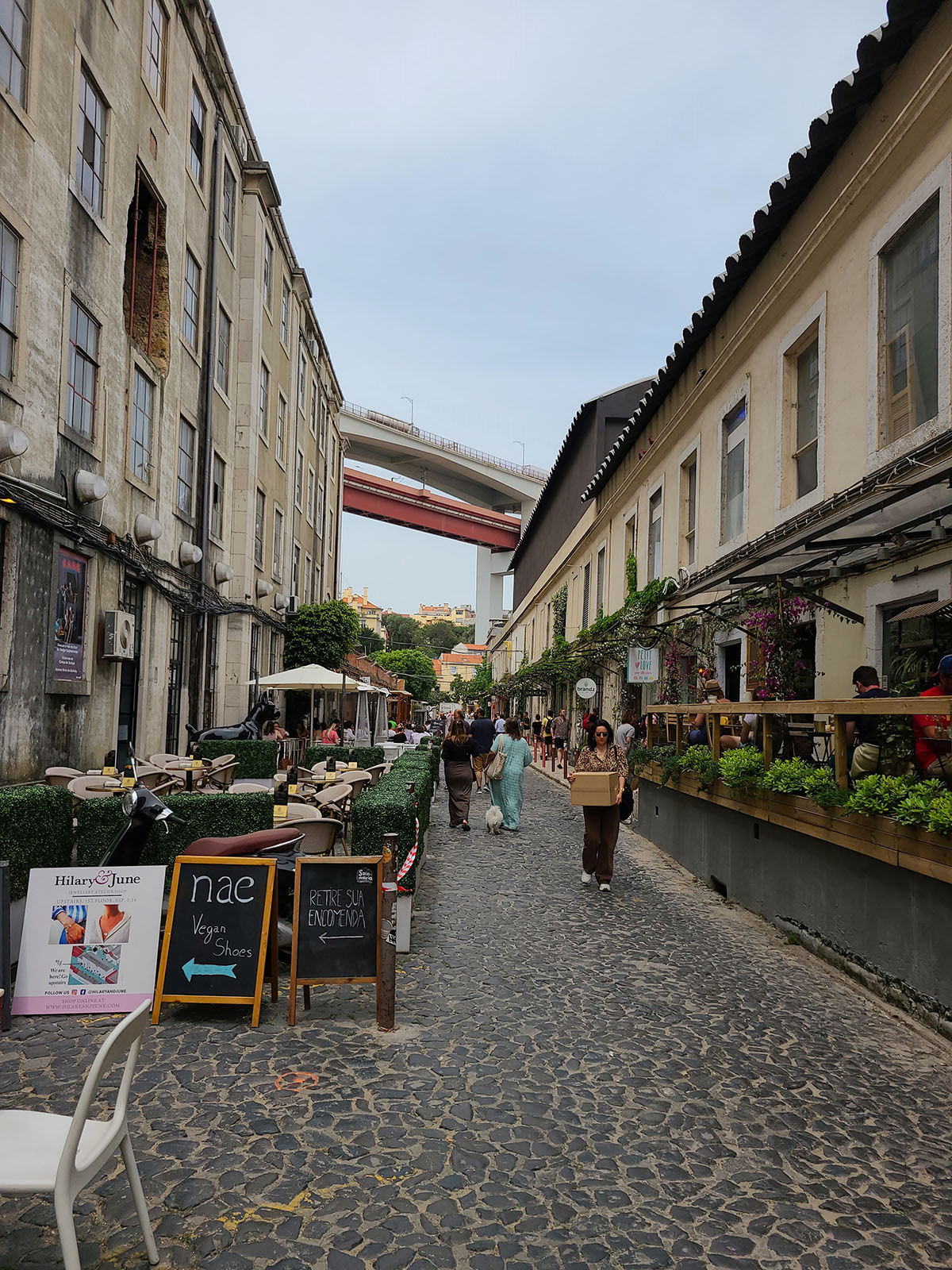 A portion of the Red Bridge in the background.
A portion of the Red Bridge in the background.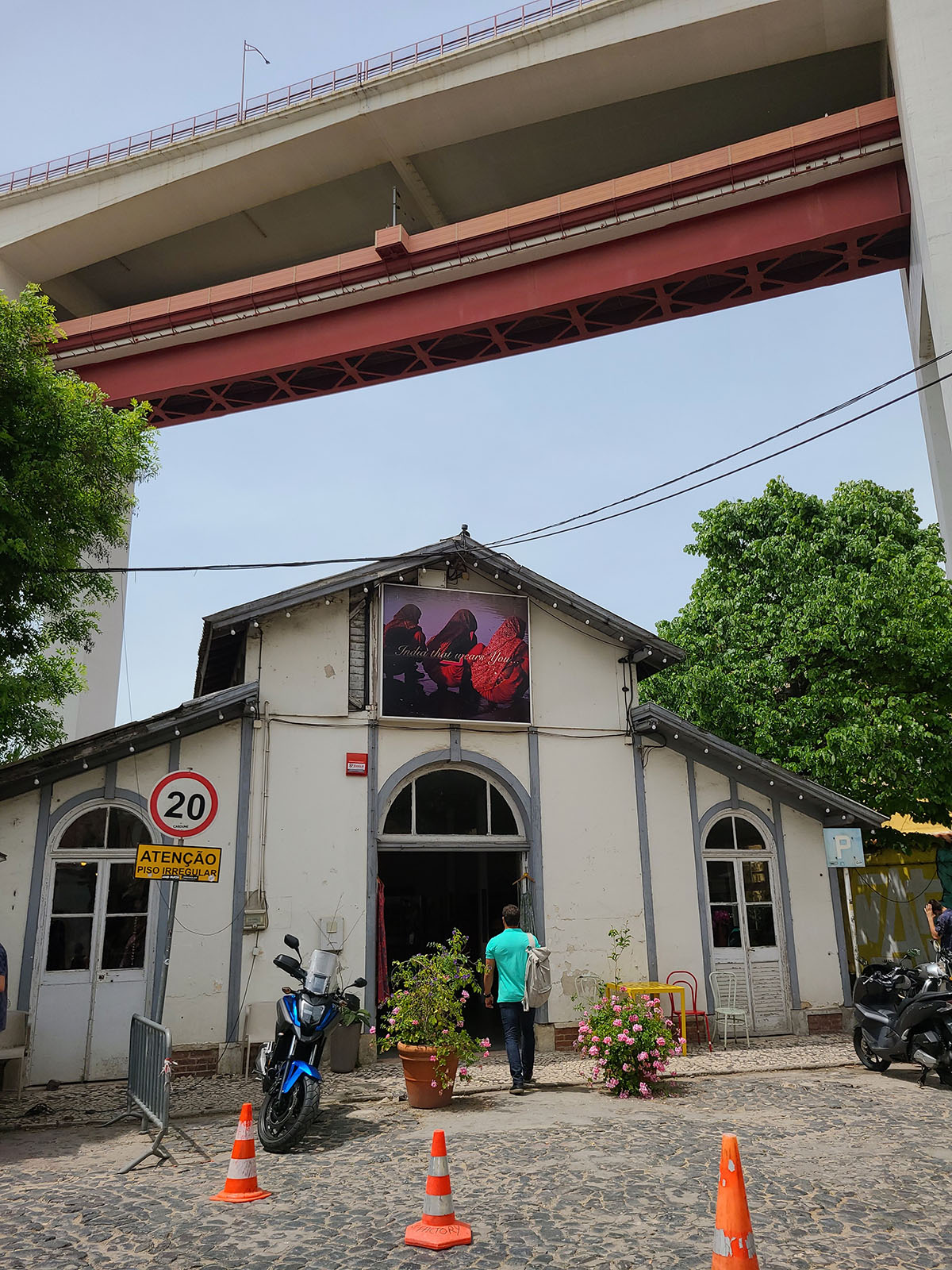 The Red Bridge forms a canopy and adds charm to The LX Factory.
The Red Bridge forms a canopy and adds charm to The LX Factory.If one loves local markets, Lisbon has no shortage of a wide variety of atmospheric markets. The LX Factory has a Sunday market spread out among the permanent boutiques, galleries, bars, and restaurants. Open on Sundays from 11 am to 8 pm.
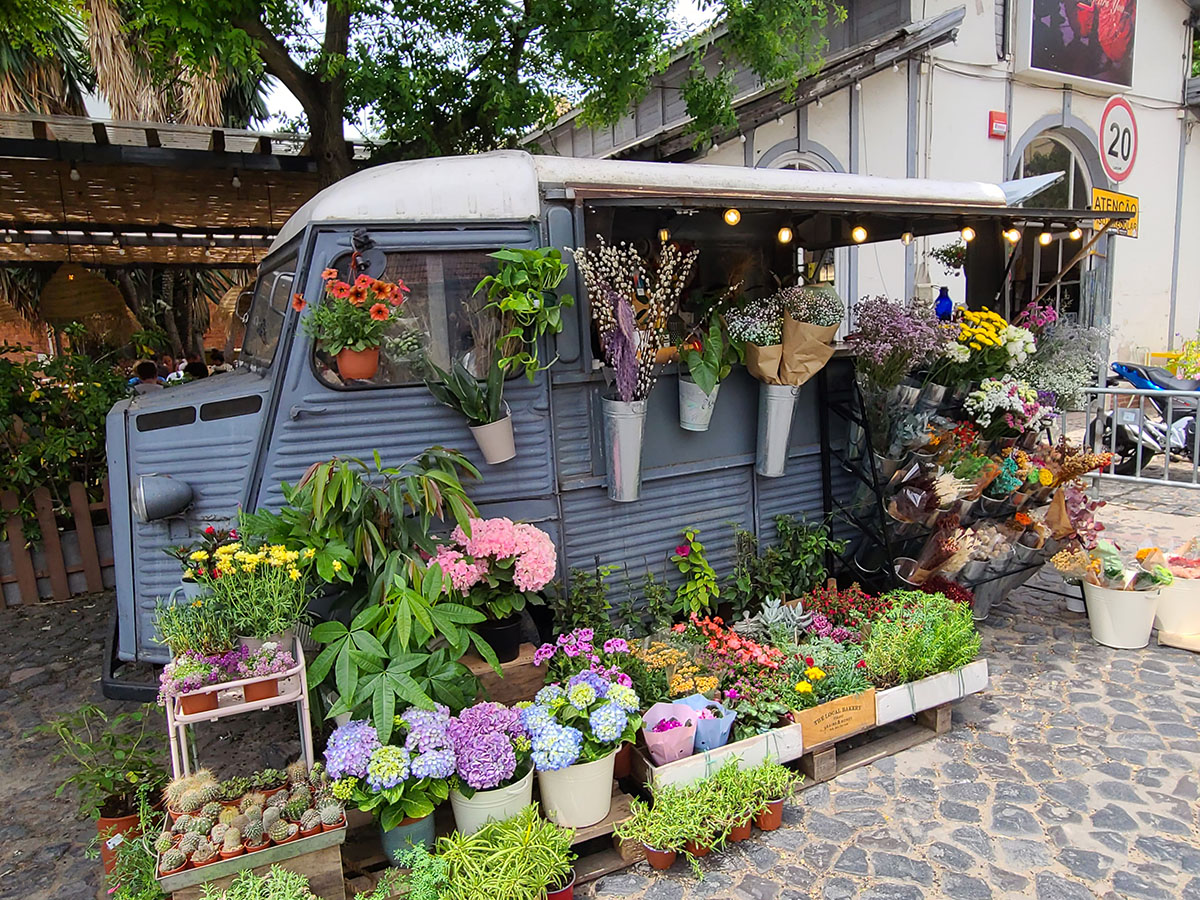
Mercado Praϛa da Figueira: Like many Portuguese markets, is located in a historic building that fell into disrepair and was restored in 2013. The market is frequented for its irresistible patisserie, fresh produce, variety of cheeses and meats. Open Monday to Saturday.
Closed on Sunday.
Address: Praϛa de Figueira 10 – Rossia/Baixa
Time Out Market: is a unique market located within a larger market, Mercado da Ribeira. It’s the go-to market for locals in search of the freshest fish and best cuts of meat—a market where professional chefs prepare dishes that are a gastronomic treat.
Address: Av24 de Julho.
** Closest Metros: Santos, Cais Sodré, R.S. Paulo.
Feira da Ladra is an extensive open-air flea market in the Alfama district, which is held at the Campo de Santa Clara (also called the Santa Clara Flea Market) on Saturdays and Tuesdays from 9 am to 6 pm.
**Note: This is not a complete list of all the markets. They are plentiful in Lisbon.
